Installations









An Impossible Address builds on Sanzgiri’s extensive engagement with Afro-Asianism, the 1955 Bandung Conference, and cross-continental networks of resistance that bridged India and Angola in struggles for freedom from Portuguese rule. The exhibition of the project engages visually with the idea of the political stage. Alongside the central film, it breaks down the architecture of official performance into informal poetics, through selected image prints and textiles that nod to the nine distinct acts of Sanzgiri’s film. Working against archives’ gaps and lapses, An Impossible Address explores the potency of collective inheritance.
Installed surrounding the film screen, Sanzgiri presents buried and unearthed shards of muslin fabric that had been rotting in large compost piles for a month alongside arrangements of archival images seen in the film that have been blurred, creating a tension between the illegibility and opacity of historical memory.
An Impossible Address
EMPAC (Experimental Media and Performing Arts Center @ RPI)
Sanzgiri’s new work traces the fraught legacy of Sita Valles—a revolutionary of Goan origin who fought in the liberation struggle in Angola, where she was later disappeared by the state. Grappling visually, sonically, and narratively with the difficulty of querying Sita’s elusive history from the standpoint of a silent present, Sanzgiri’s film confronts the contradictions of solidarity and afterlives of collective trauma beyond the grave. How do we bear witness to revolution interrupted? An Impossible Address is styled as a letter that cannot be delivered–seizing on sounds and images that erupt from historical memory.








Mercer Union
Suneil Sanzgiri: An Impossible address
APRIL 12 - JUNE 14, 2025
Commissioned for his solo exhibition, the artist’s new film An Impossible Address (2025) culminates over four years of research around the bonds of mutual struggle for freedom that developed between India and Africa against the Portuguese empire. The work is the final in a series of two films that trace the connections between various liberatory figures in India, Mozambique, Angola, and Guinea-Bissau. Central to the artist’s new film is Sita Valles, an Angolan-born doctor and revolutionary of Goan origin who joined the liberation movement against the Portuguese in Angola and was subsequently disappeared there.
The film is conceived as a letter to Valles that is elaborated, complicated, and in many ways unbounded from words by the staccato of images and sounds that punctuate its reading. Both impossible to compose and to deliver, the letter begins in an acknowledgement of death and moves through it with glimpses of what remains extant—history, memory, inheritance, and other forms of transmission that break the extents of life. Throughout, Valles’s figure guides and haunts Sanzgiri as the film pulls at the threads of history to expose its entanglements with contemporary expressions of empire and the stakes of global anti-colonial and anti-imperialist struggle today.
Contextualizing Valles’s story within a broader political history, Sanzgiri’s research looks to the formation of national liberation movements, civil society groups, and historic gatherings in order to map the desires and conditions of organized struggle in Asia and Africa following the Second World War. In the gallery, the artist’s film is set within an installation that gestures to the Asia–Africa Conference of 1955—the first significant gathering of states from the two continents held in Bandung, Indonesia. Staged as a show of strength through mutuality, and remembered for its novel endeavour and theatricality, the Bandung Conference is today conserved by the Museum Konperensi Asia Afrika through virtual and life-size dioramas.
Reimagining its elements in the gallery, the artist presents a set of abstracted flags in monochrome that refer to the twenty-nine nations represented at the Bandung Conference. Composed of suspended acoustic felt, these forms are as much a series of stake-less flags as they are an ensemble of quiet figures that hold the room. Articulated between these soft works and set against a crimson backdrop are seven red chairs that invite the viewer to take a seat at the central panel desk from which the conference was led. For Sanzgiri, the recursive image of the conference architecture attends to the unfinished collective work lying dormant in its forms.
Shot on location in Angola, Goa, and Portugal, An Impossible Address is a kaleidoscopic and sonically vibrant journey that combines Sanzgiri’s signature visual language of 16mm film, digital animation, hand-processing, 3D scanning, and archival translations. Through this varied and material exploration, the film wrestles with its own form to test the efficacy of words and images in times of struggle, mourning, suffering, and action.


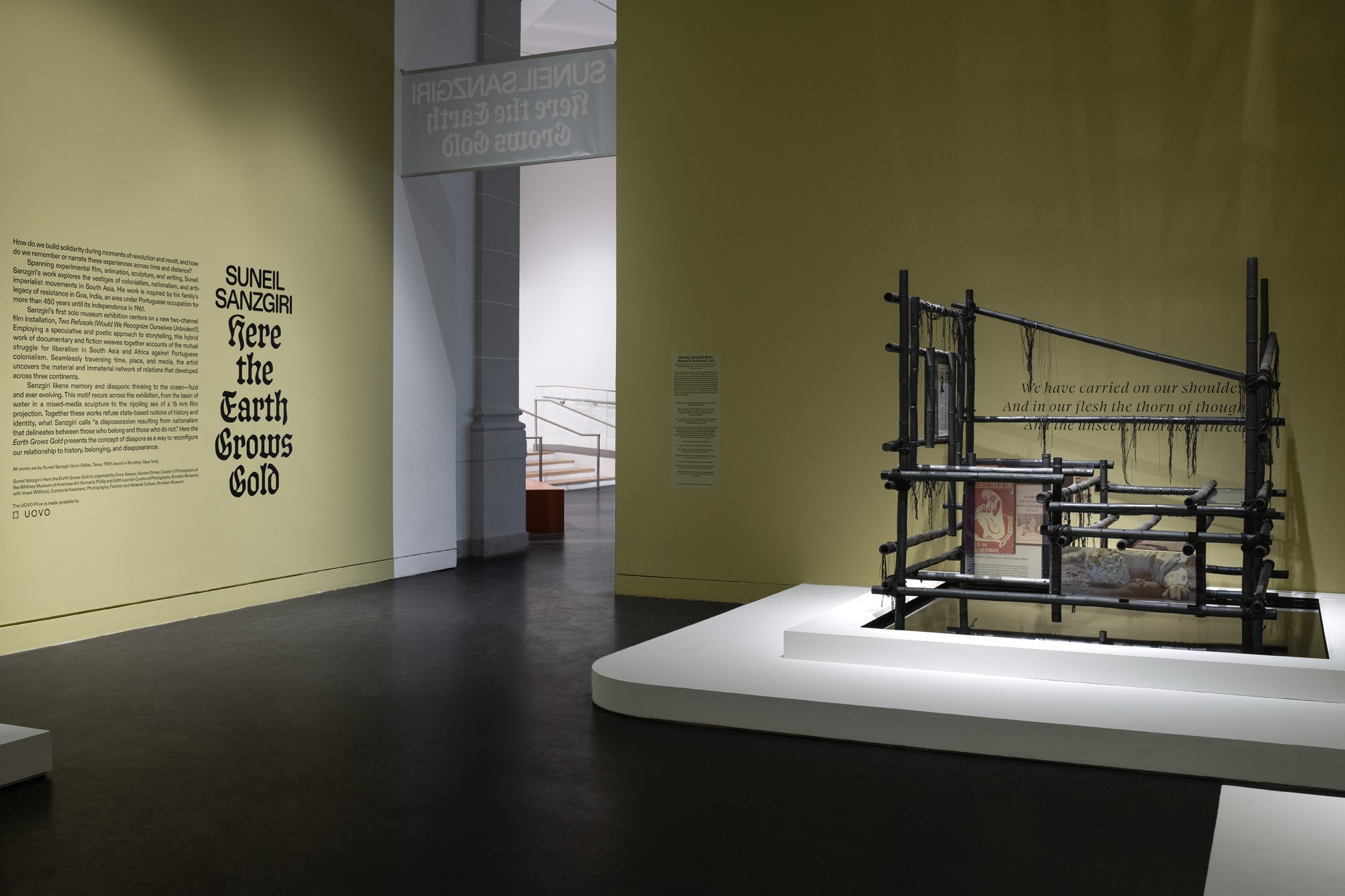

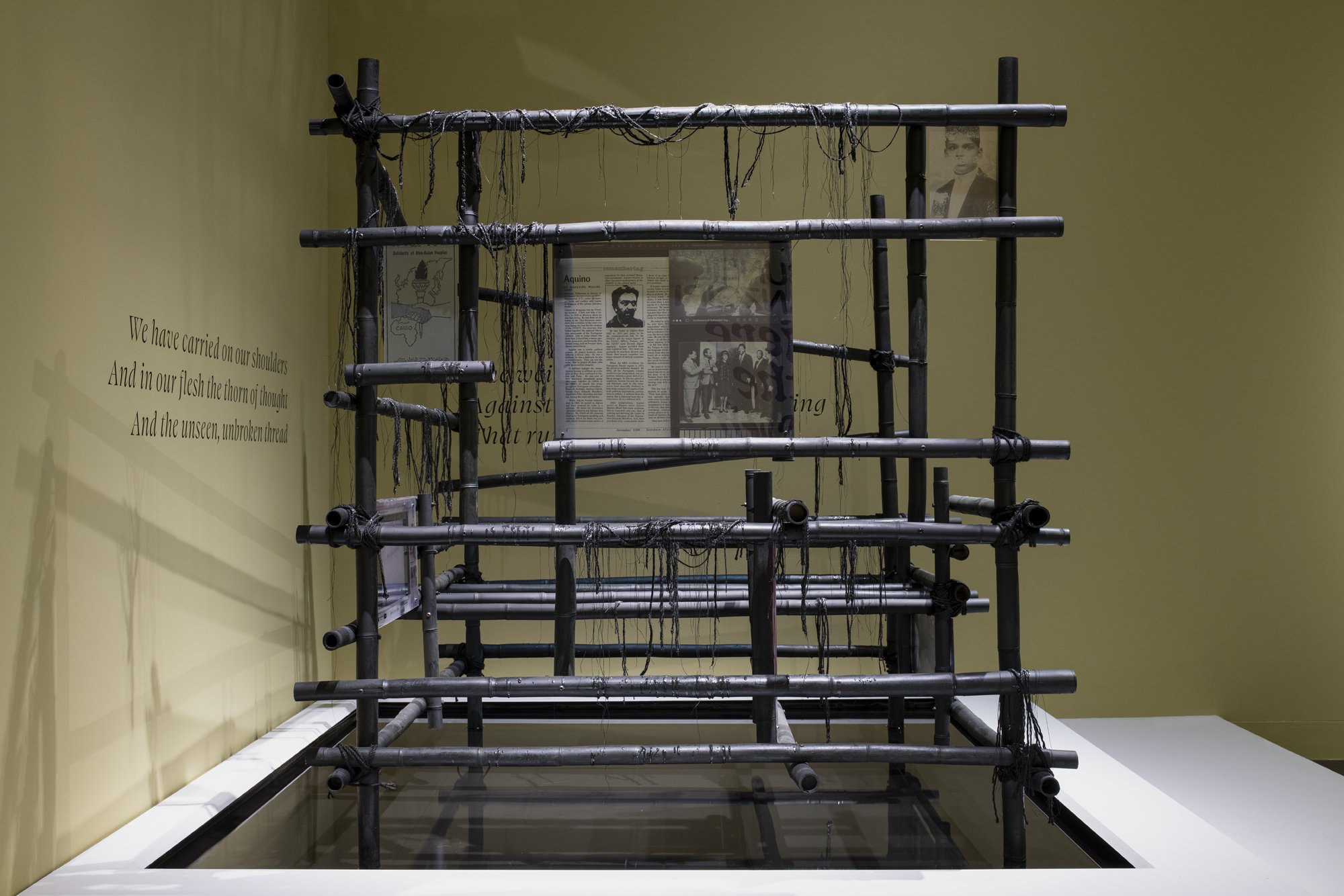
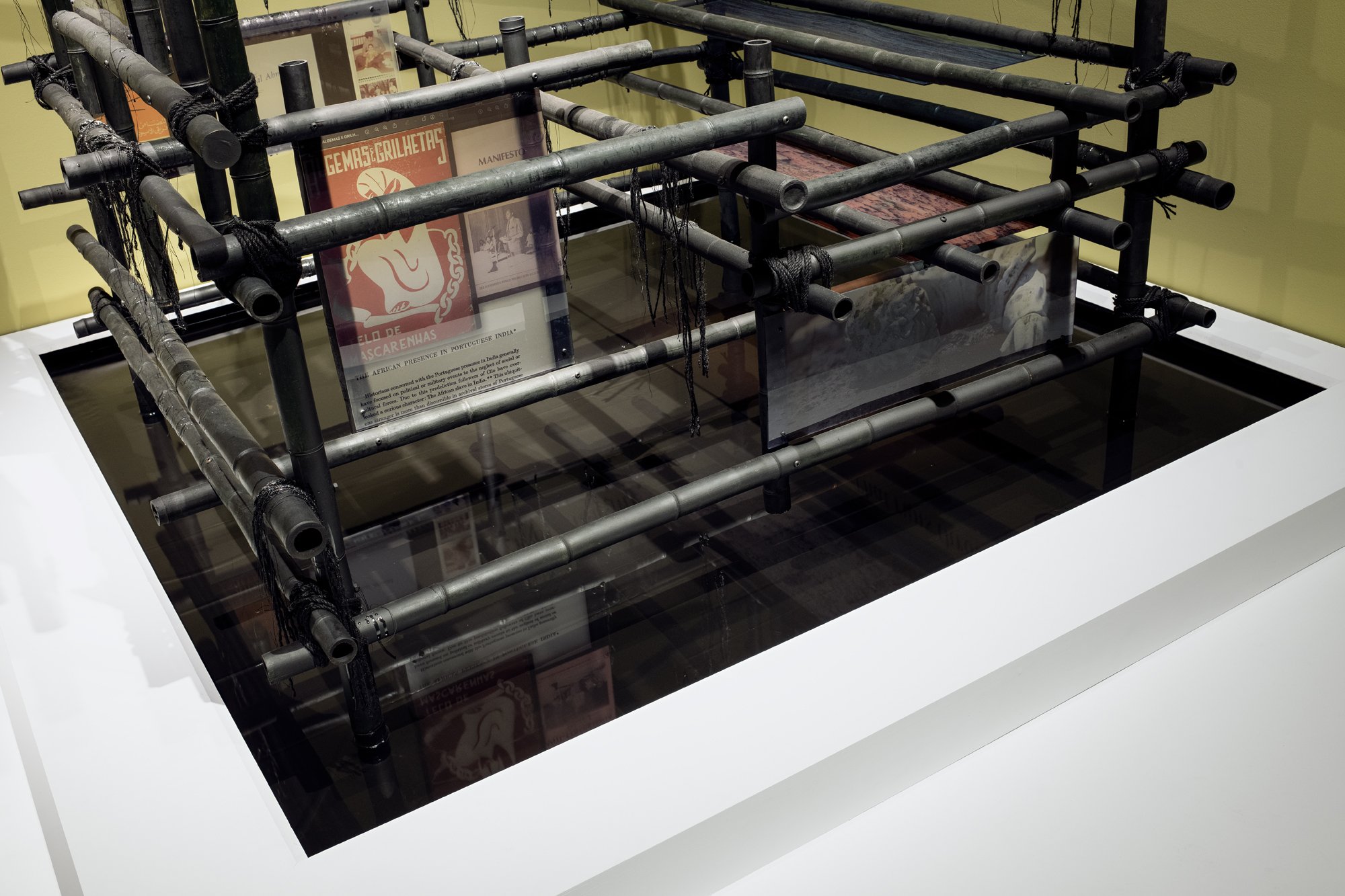
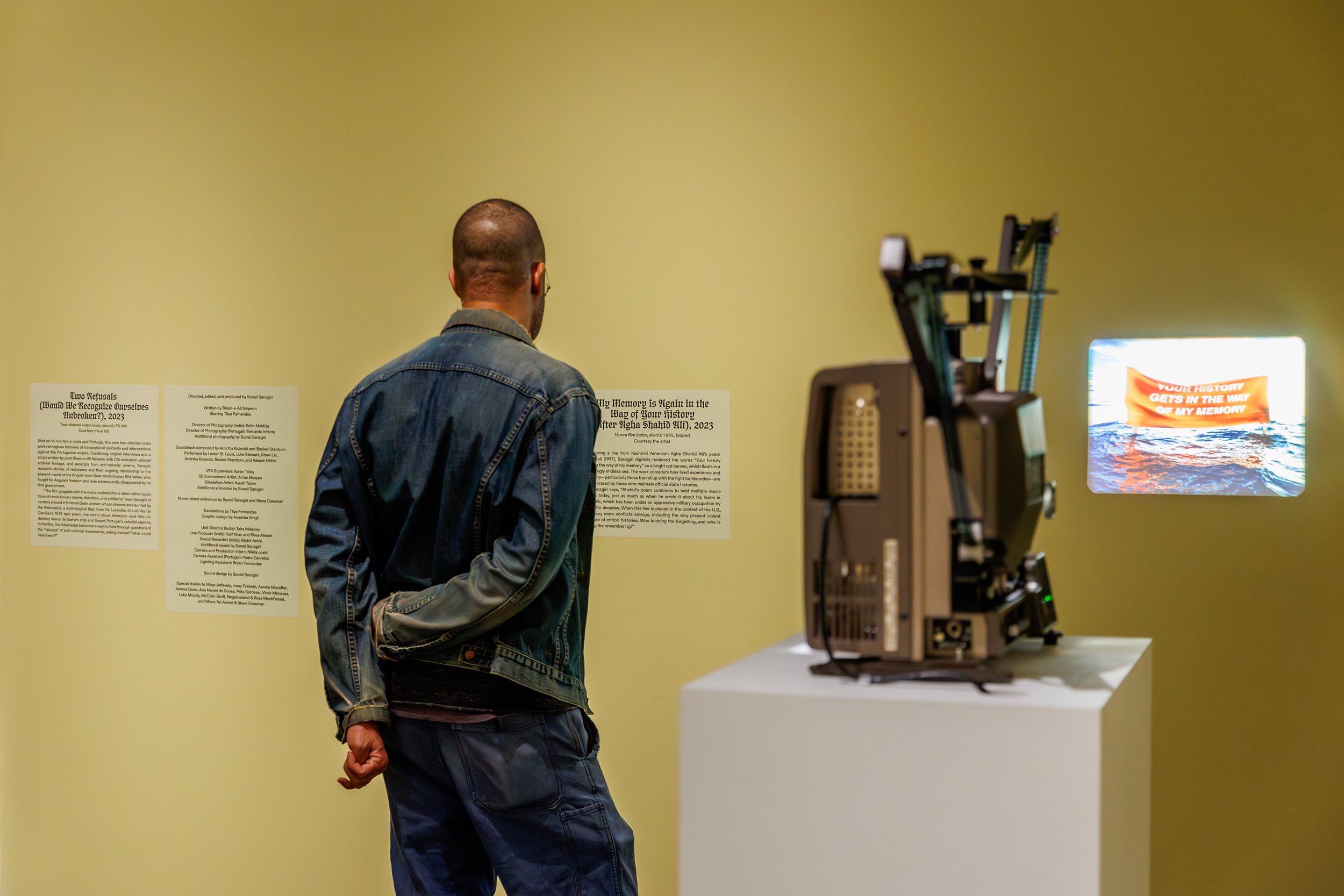
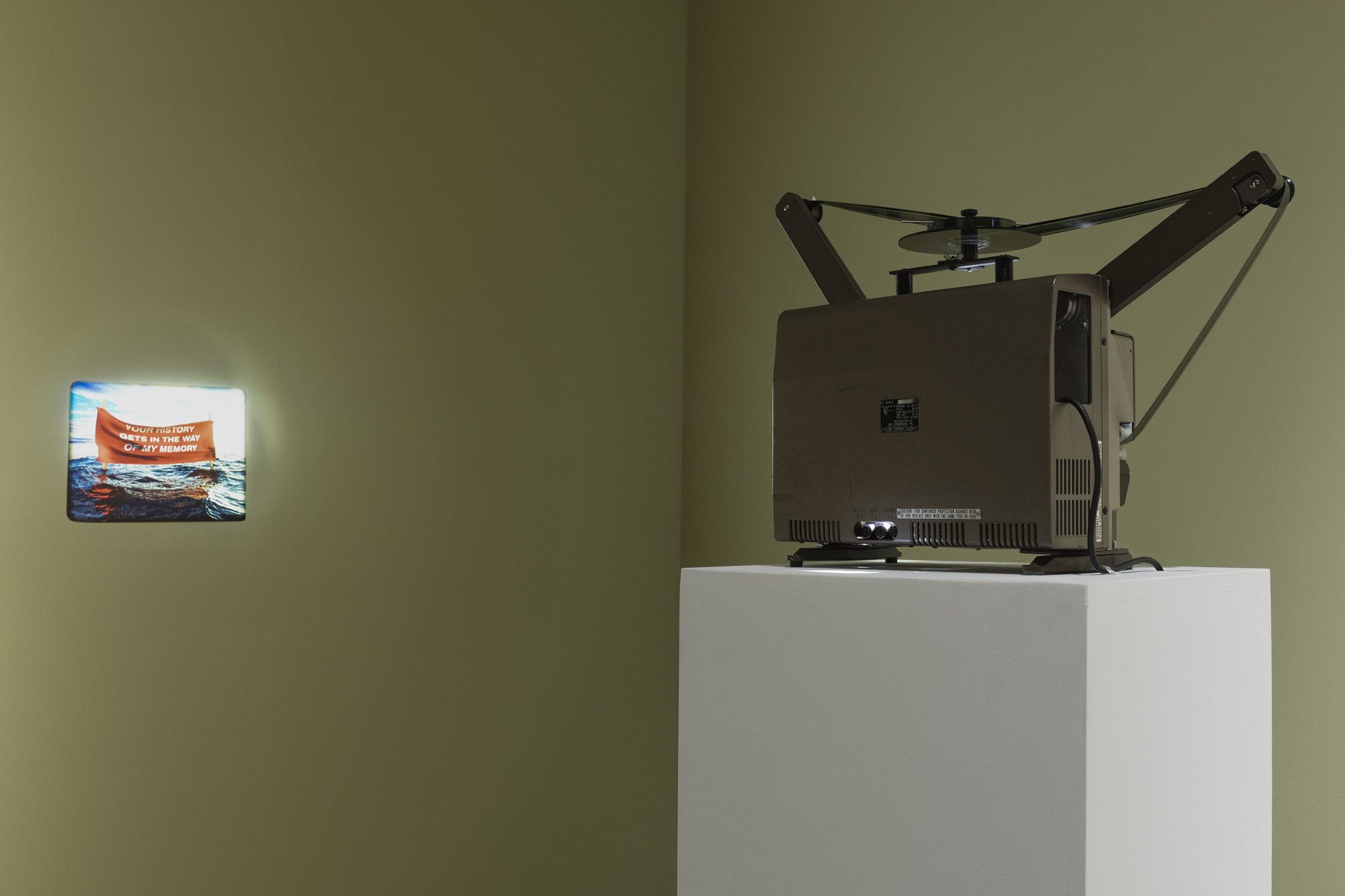
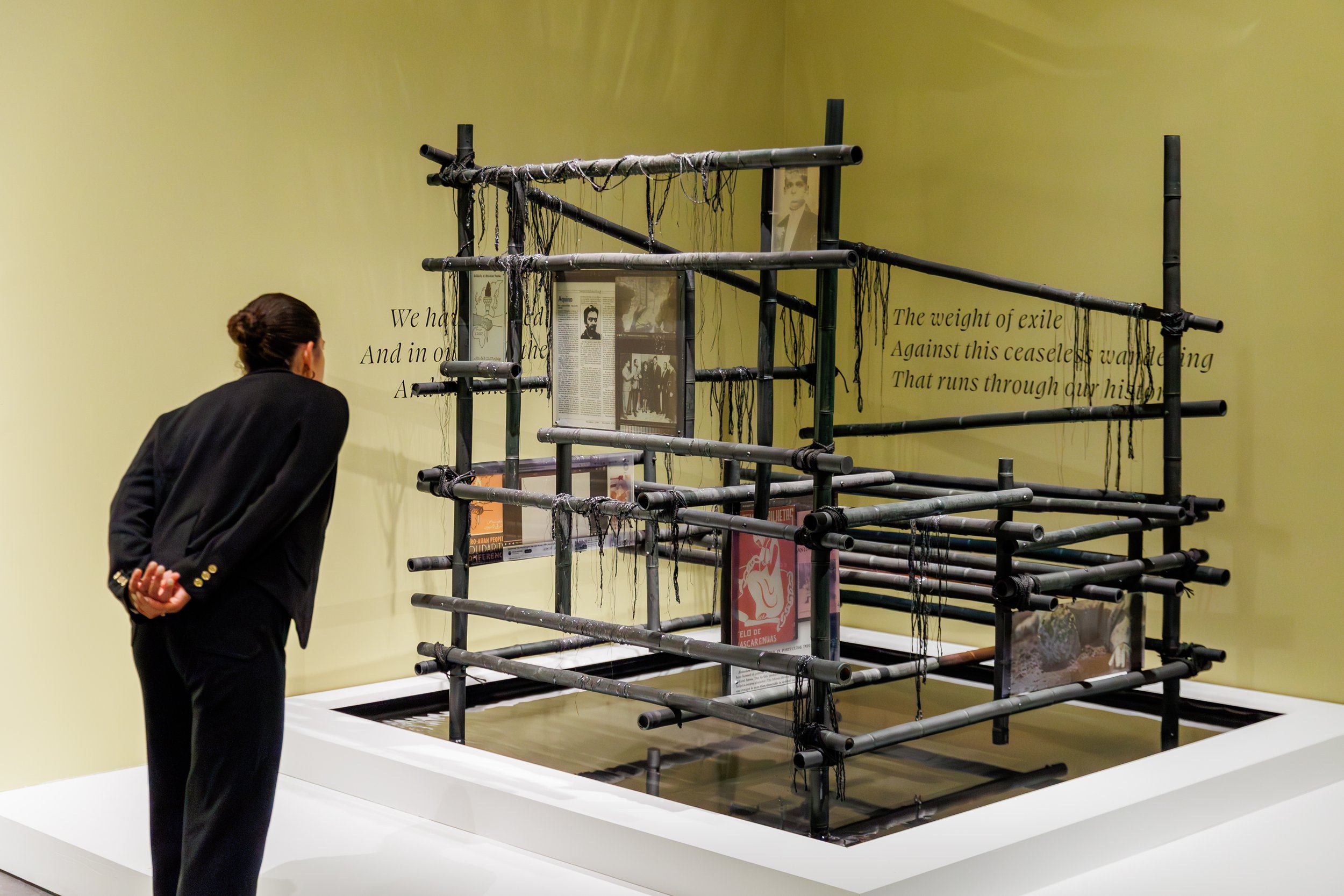
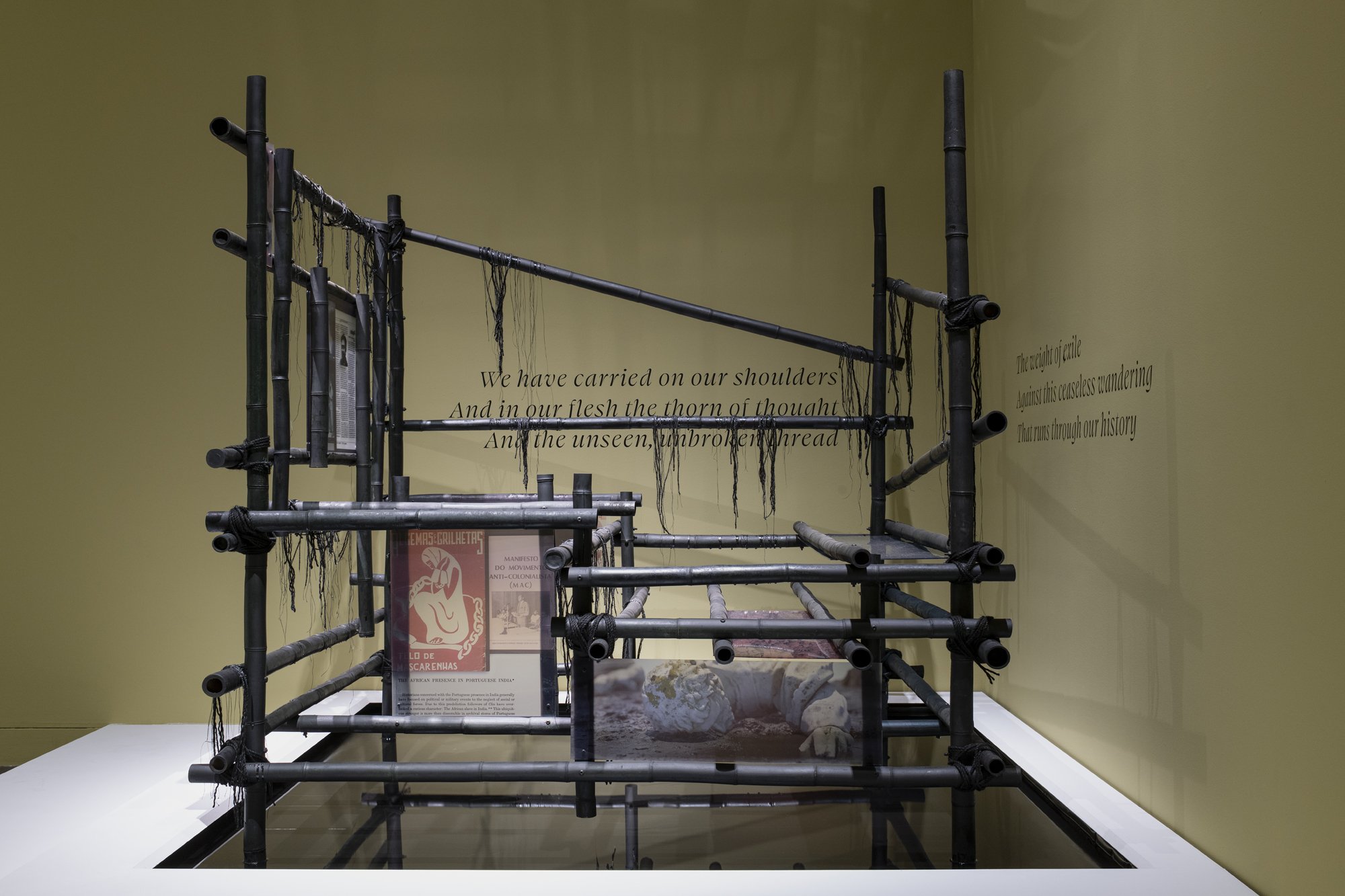
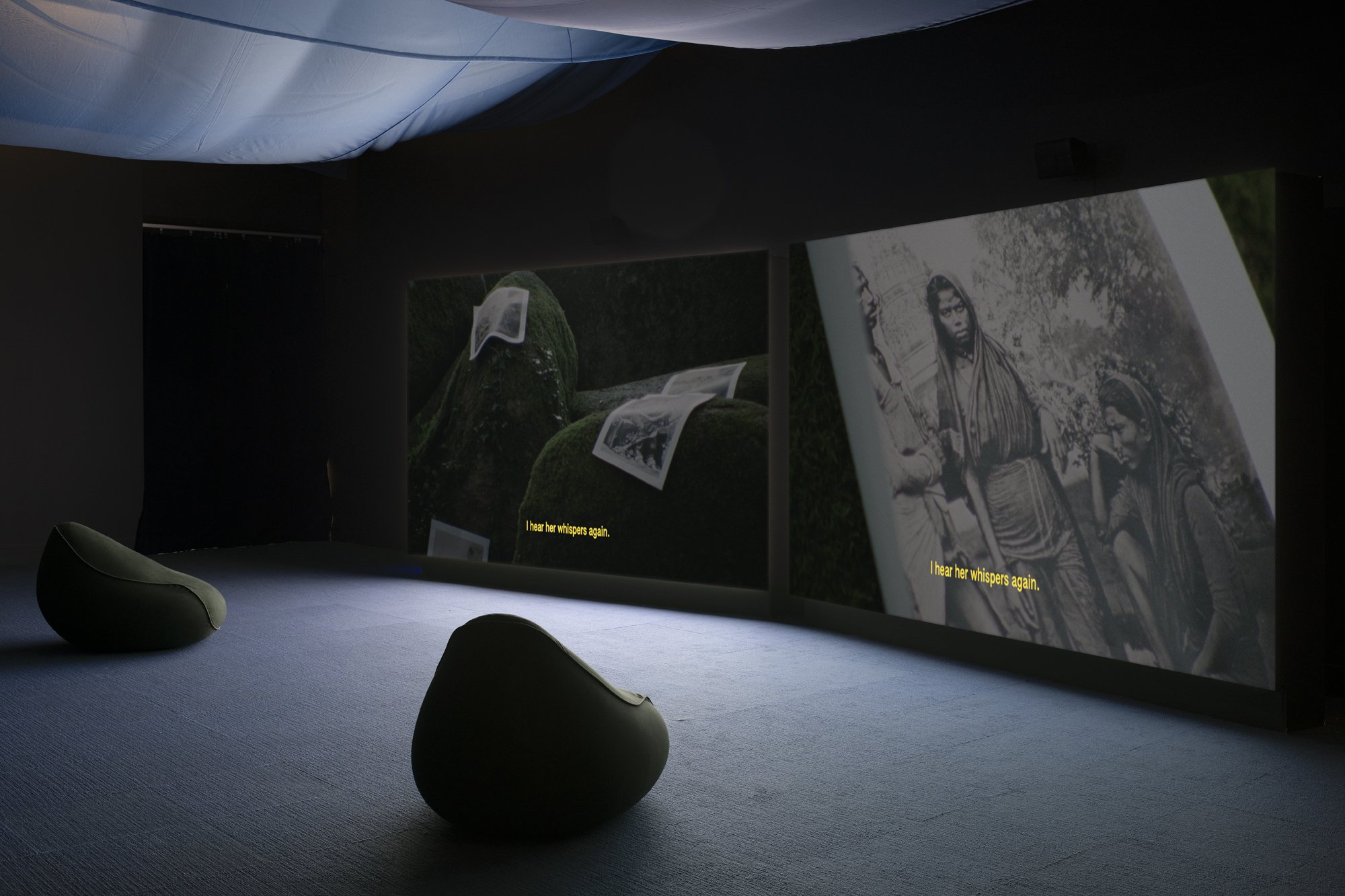
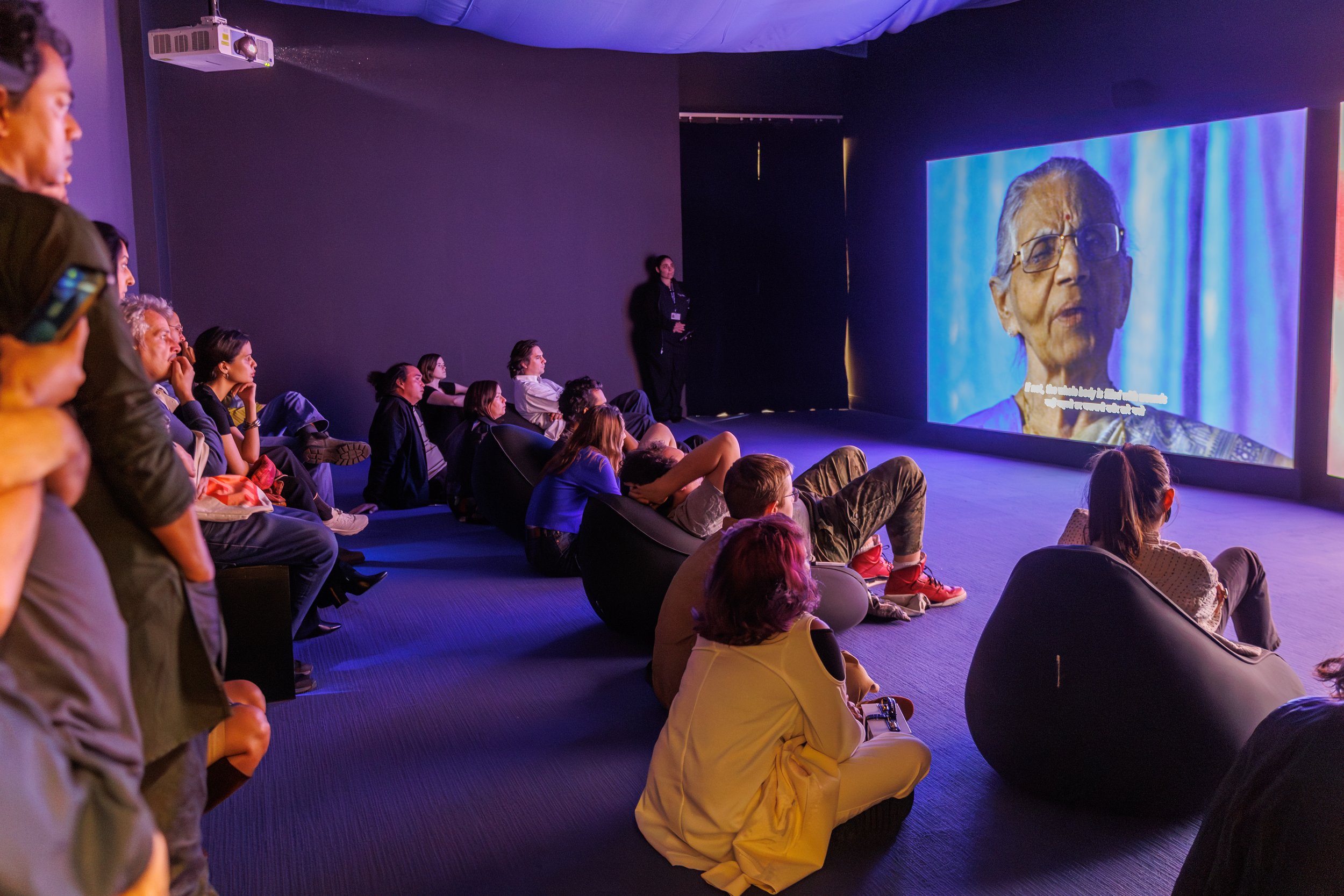
Brooklyn Museum
Suneil Sanzgiri: Here the Earth Grows Gold
Oct. 27, 2023 - May 5, 2024
How do we build solidarity during moments of revolution and revolt, and how do we remember or narrate these experiences across time and distance?
Spanning experimental film, animation, sculpture, and writing, Suneil Sanzgiri's work explores the vestiges of colonialism, nationalism, and anti- imperialist movements in South Asia. His work is inspired by his family's legacy of resistance in Goa, India, an area under Portuguese occupation for more than 450 years until its independence in 1961.
Sanzgiri's first solo museum exhibition centers on a new two-channel film installation, Two Refusals (Would We Recognize Ourselves Unbroken?). Employing a speculative and poetic approach to storytelling, this hybrid work of documentary and fiction weaves together accounts of the mutual struggle for liberation in South Asia and Africa against Portuguese colonialism. Seamlessly traversing time, place, and media, the artist uncovers the material and immaterial network of relations that developed across three continents.
Sanzgiri likens memory and diasporic thinking to the ocean-fluid and ever evolving. This motif recurs across the exhibition, from the basin of water in a mixed-media sculpture to the rippling sea of a 16 mm film projection. Together these works refuse state-based notions of history and identity, what Sanzgiri calls "a dispossession resulting from nationalism that delineates between those who belong and those who do not." Here the Earth Grows Gold presents the concept of diaspora as a way to reconfigure our relationship to history, belonging, and disappearance.




Hessel Museum, CCS Bard
“Two refusals (would we recognize ourselves unbroken?” (two-channel video installation, hanging fabric), 2025
included in the exhibition Would We Recognize Ourselves Unbroken curated by sibia sarangan
How do official histories contradict and erase lived experience, and how can we expand the potential of memory as a tool for subversion?
Would We Recognize Ourselves Unbroken brings together recent works by Simon Benjamin, Keli Safia Maksud, and Suneil Sanzgiri that assert personal and collective experience over prescribed colonial narratives. The artists challenge entrenched paradigms of temporality, identity, and liberation by complicating past and present, fiction and truth—or what we have come to believe is the truth.
Working across painting, sculpture, installation, and film, the artists use experimental layering that takes on many forms, from an imagined geological sample, to embroidered scores of national anthems, to CGI and modified 16mm found footage. Their works draw from archives and long-term research to uncover hidden narratives, reclaim images, and reimagine history through artistic intervention. Despite their imperfect nature, these forms of recall become effective modes of alternative storytelling and knowledge building that renegotiate legibility to disrupt the continued deployment of the colonial gaze. Departing from their own experiences, Benjamin, Maksud, and Sanzgiri use memory to situate themselves and audiences across time and place, questioning who we really are in the wake of fractured histories that continue to haunt the present.
The artists featured in Would We Recognize Ourselves Unbroken uncover leaks in our cultural memory and destabilize received histories by refusing to neatly define or contain time and identity. Through their refusals, they forge new paths toward alternative futures.
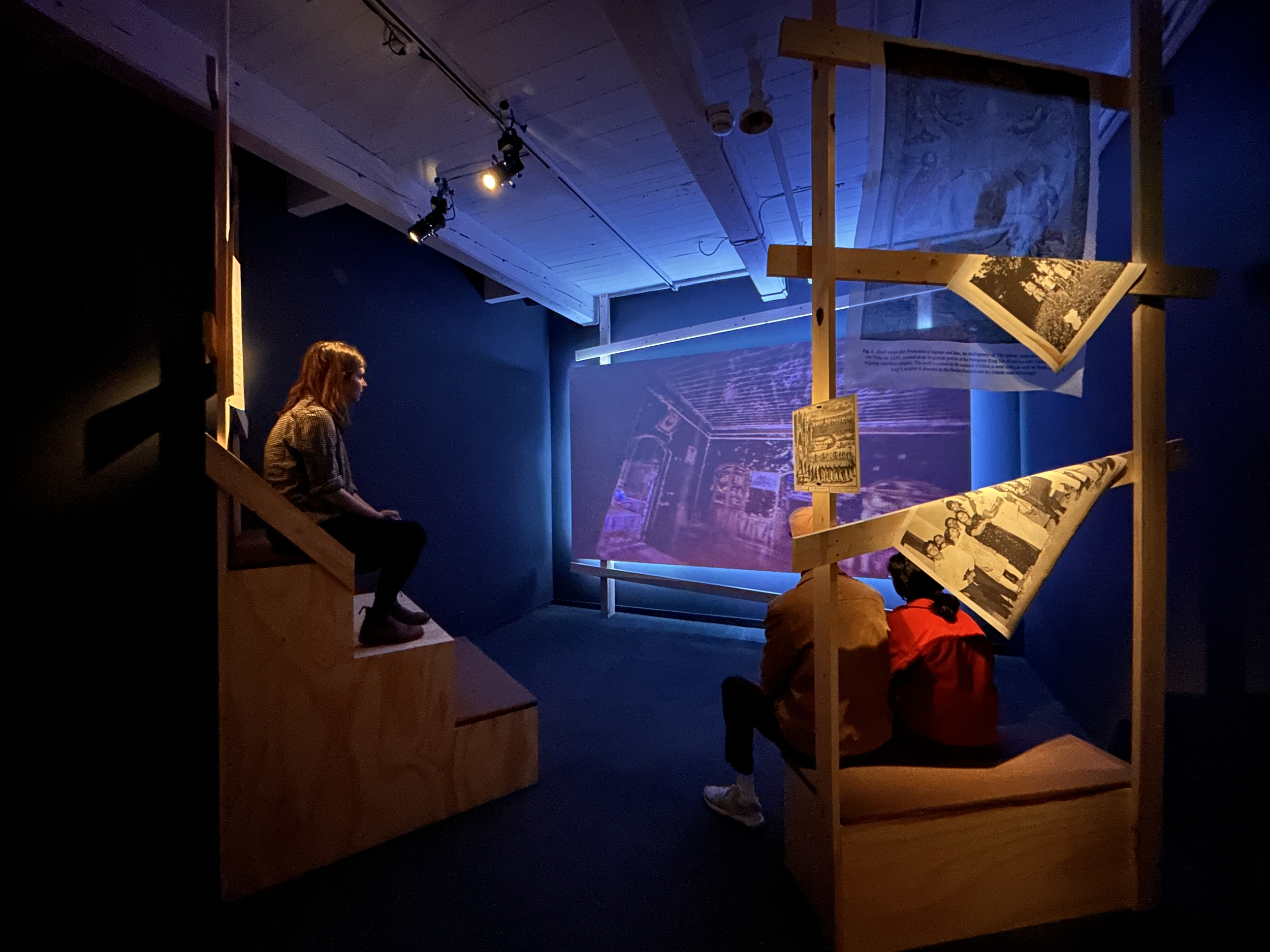
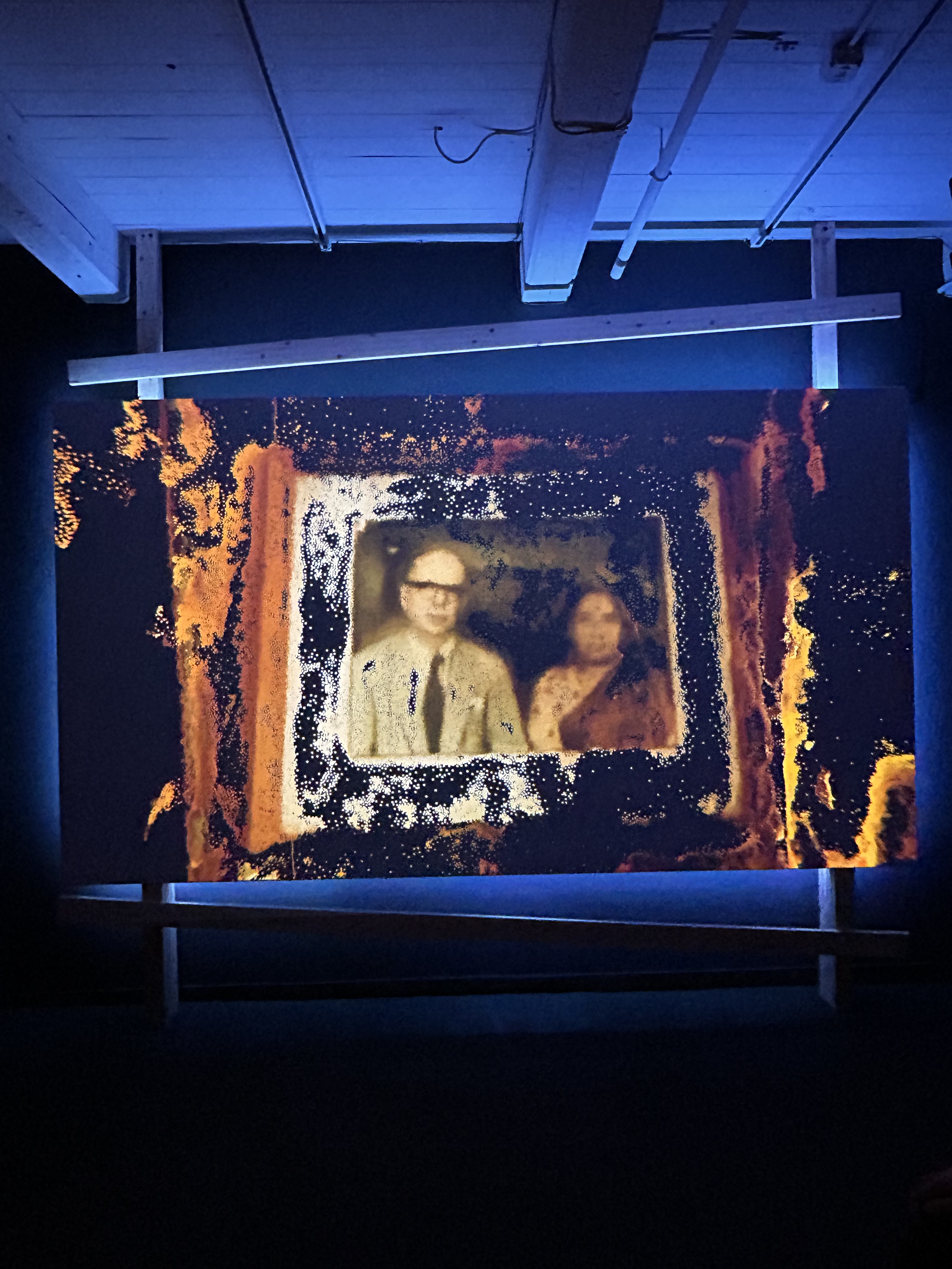


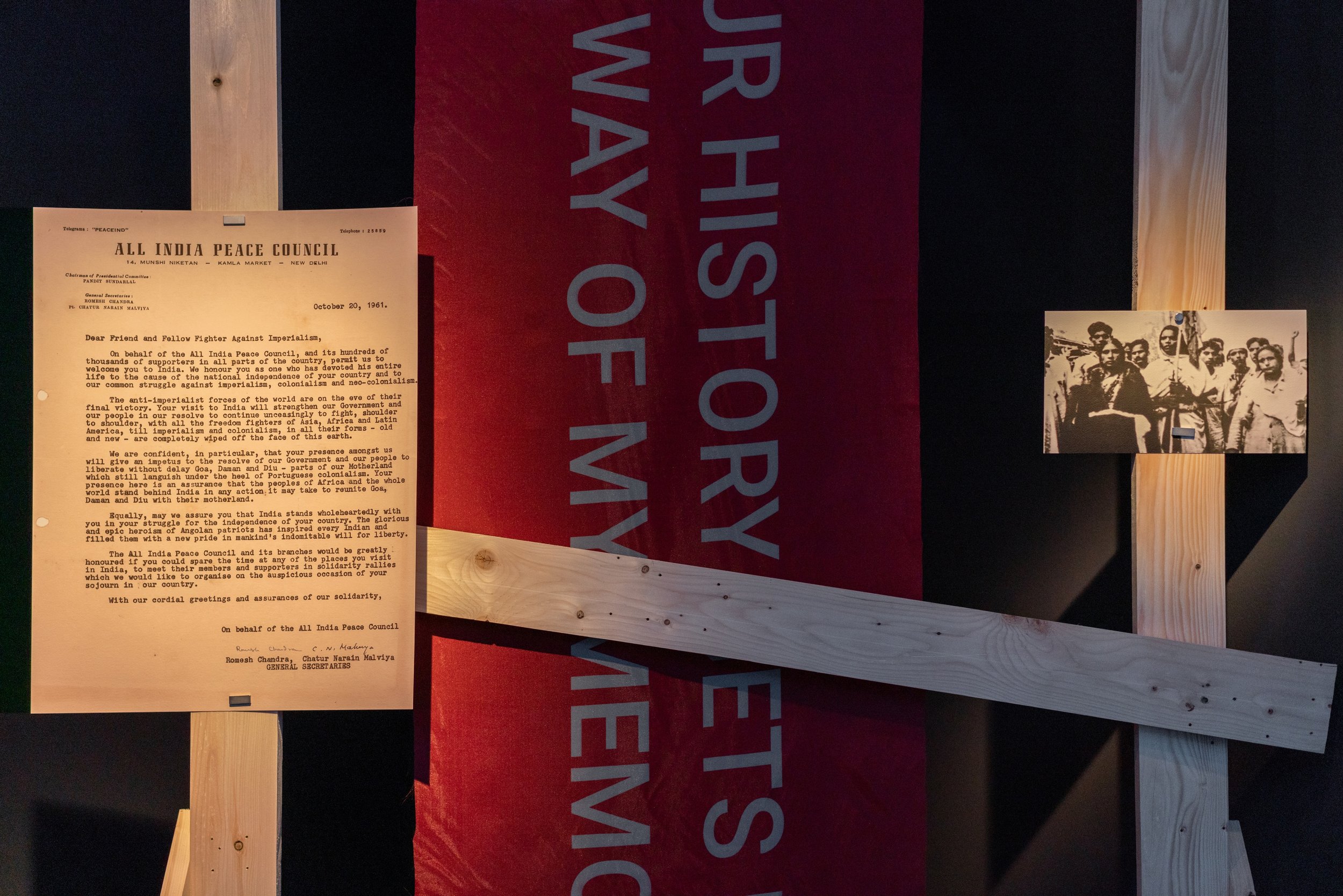
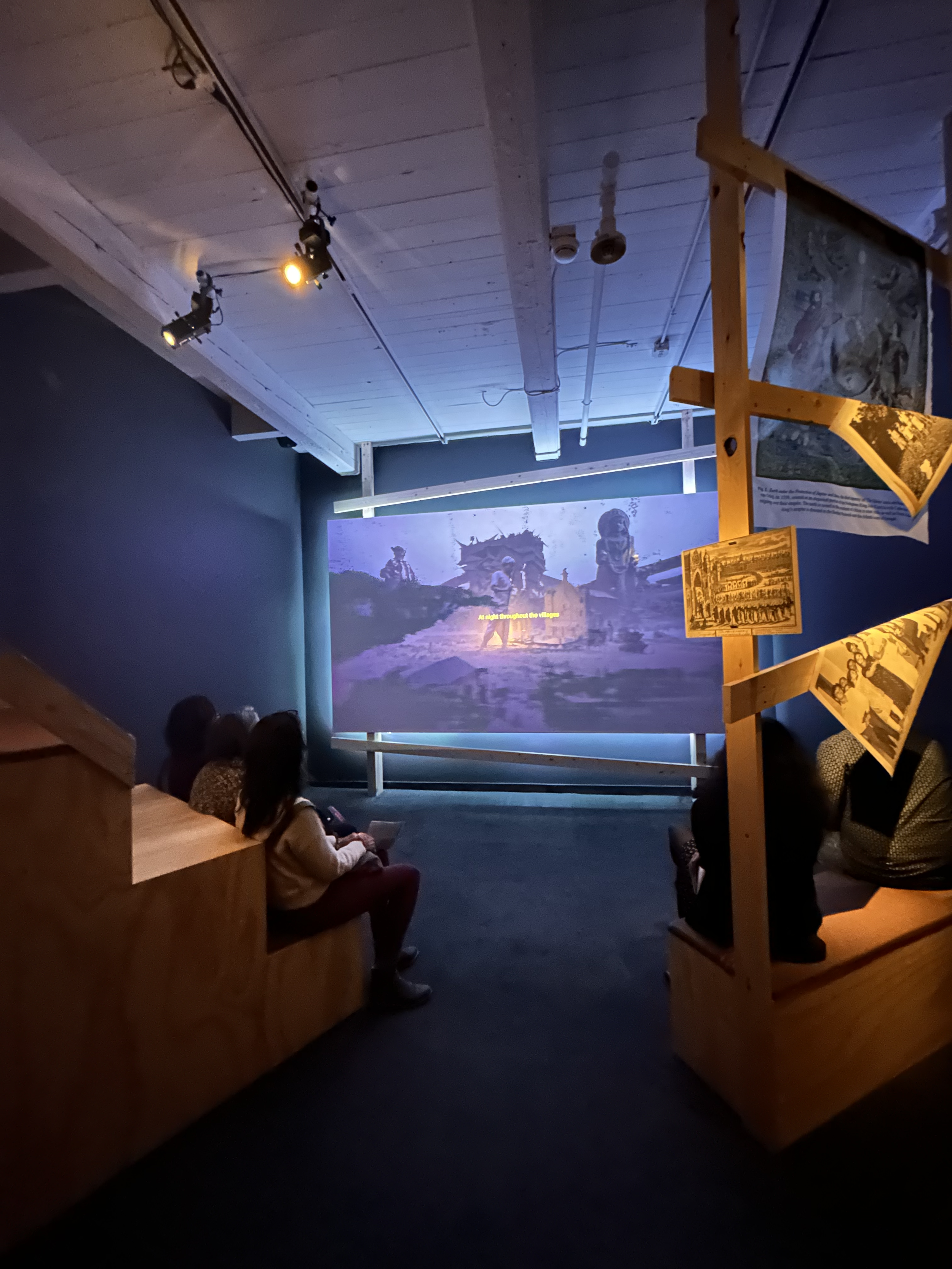
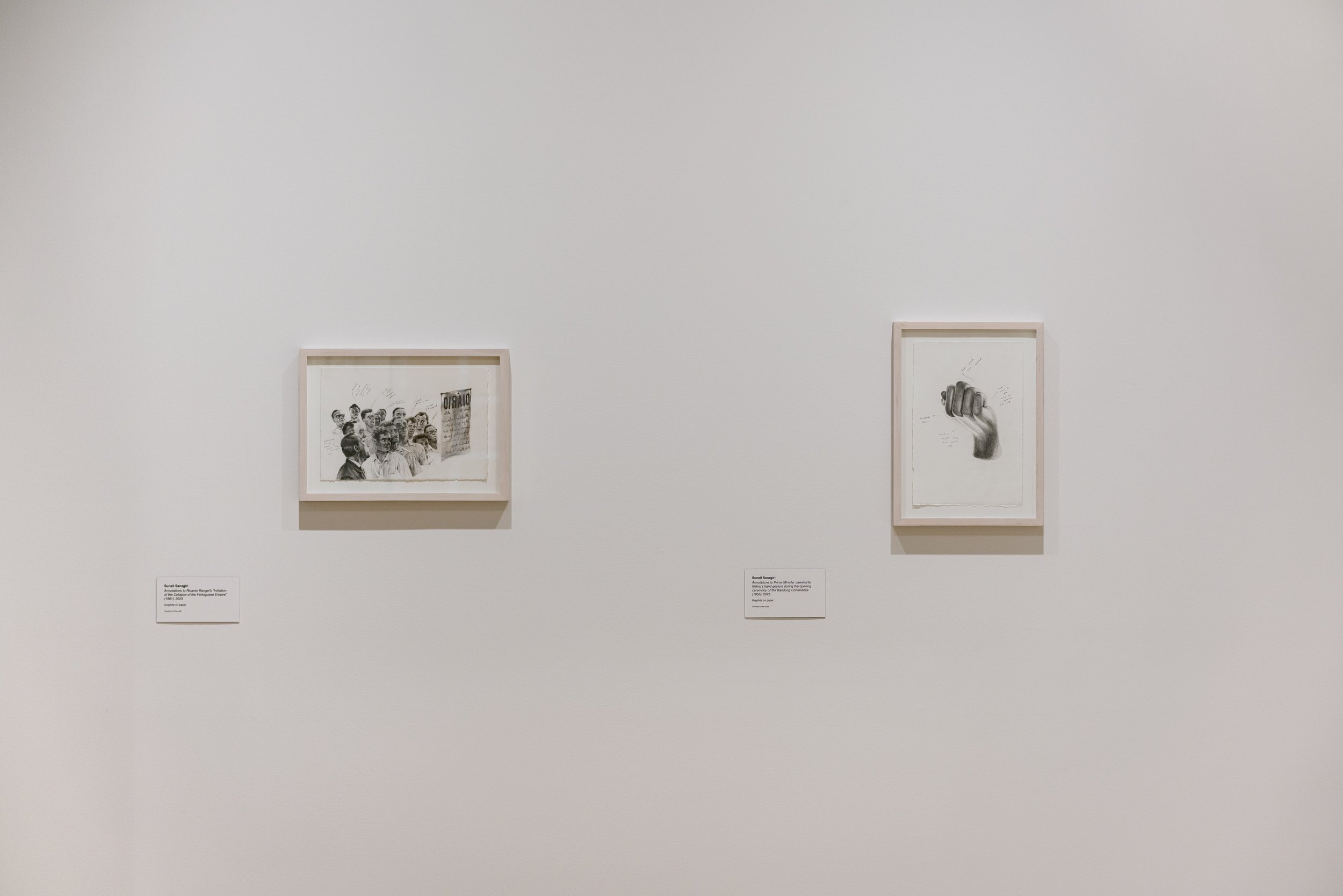

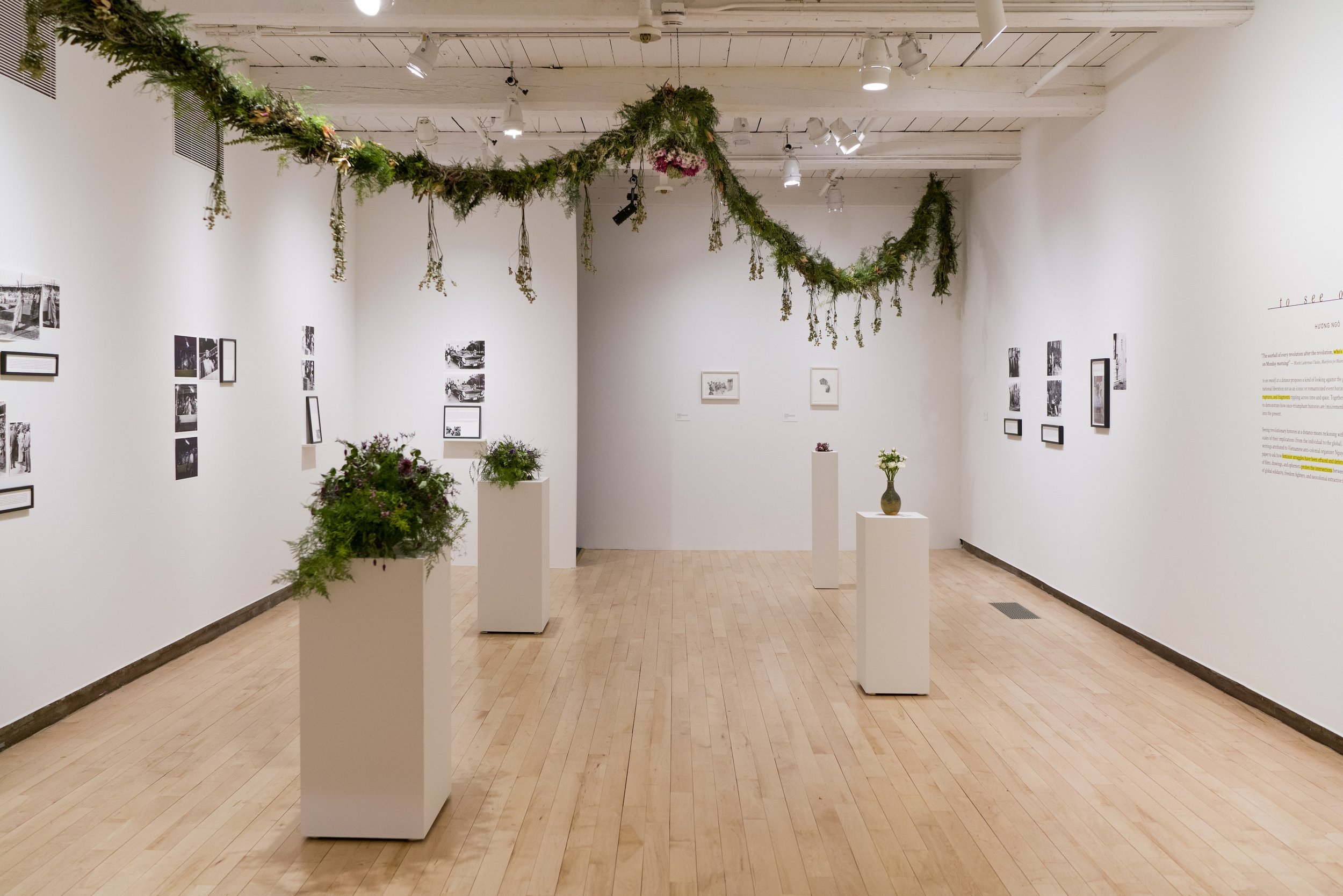
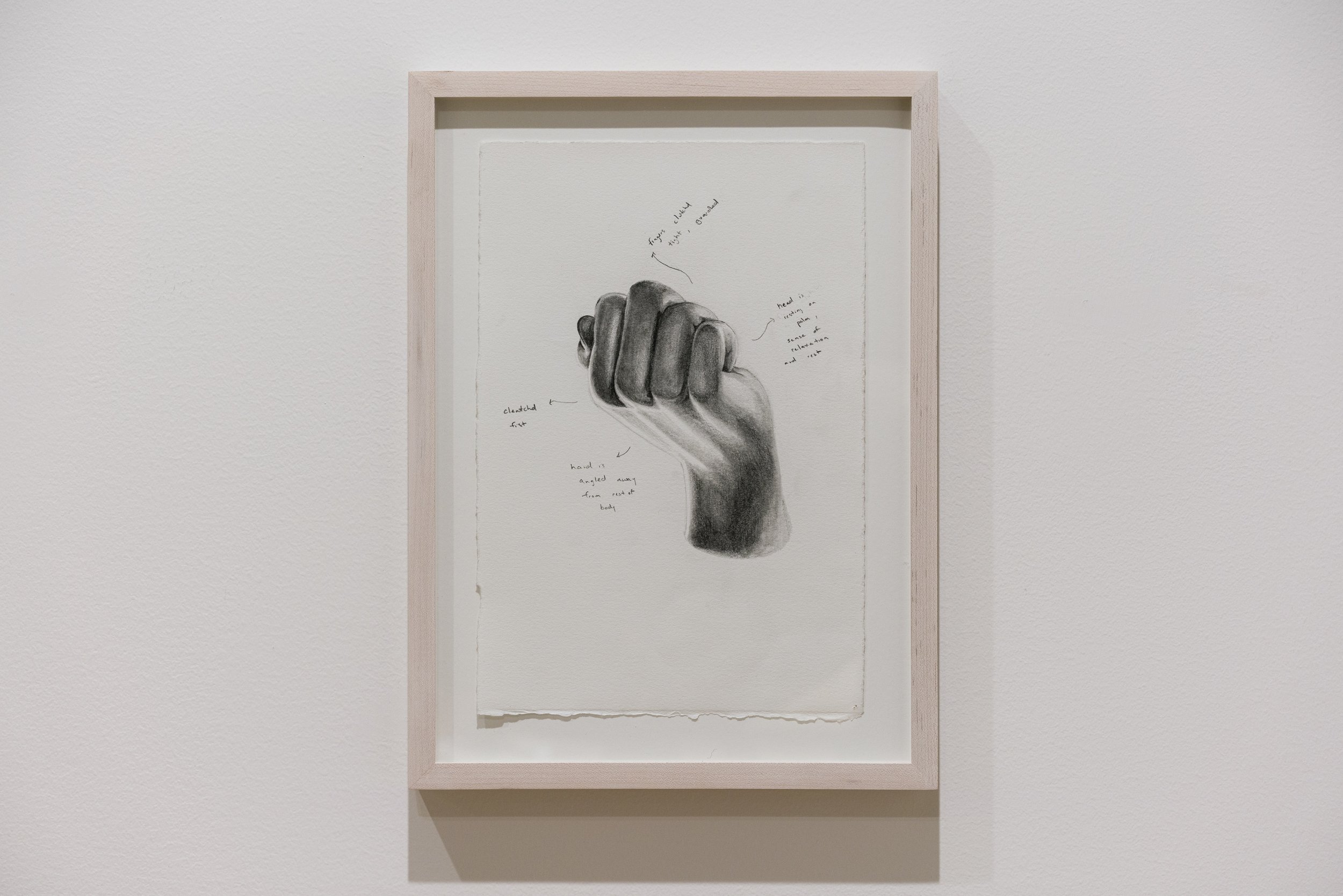
Mass MoCA
Barobar Jagtana Trilogy (single-channel, mixed media installation, archival ephemera), 2023
Included in the exhibition to see oneself at a distance curated by Meghan Claire Considine
to see oneself at a distance proposes a kind of looking against the grain that focuses on revolutionary moments throughout the 20th century while complicating their over-romanticization. To see these histories at a distance is to reckon with their complexities, afterlifes, and the varying scales of their implications (from the individual to the global). The four artists in the exhibition employ rigorous archival research to create artworks that explore decolonization not as an event horizon, but as a series of gestures, ruptures, and fragments that might ripple across time and space. Together, the artists in to see oneself at a distance demonstrate how once-triumphant histories of liberation are (mis)remembered, instrumentalized, negotiated, and endure into the present.
In a trilogy of short films shown in a new installation, Suneil Sanzgiri probes the intersection between his family’s history in Goa, India, and stories of global solidarity, freedom fighters, and neocolonial extractive forces. Kapwani Kiwanga locates botanical elements in the photographic and video records of independence ceremonies, treaty signings, and the official events in newly independent African nations. She has invited designers Tu Le of 328North (Williamstown, MA) and Steffany Trần of Vy Voi Studio (New York, NY) to study and recreate these arrangements, which will dry and wither over the course of the exhibition. Hương Ngô will exhibit new works on paper investigating Marxist writings attributed to the Vietnamese anti-colonial organizer Nguyễn Thị Minh Khai and asking how feminist struggles, sitting at the intersections of patriarchy and colonial surveillance, have been effaced and deferred for the sake of national narratives. And in an investigation of what she calls “digital colonialism,” Maryam Jafri’s two installations examine how archival photographs from key moments in the histories of certain African and Middle Eastern nations have been acquired and edited by multinational stock photo agencies, suggesting that some archives obscure as much as they reveal.
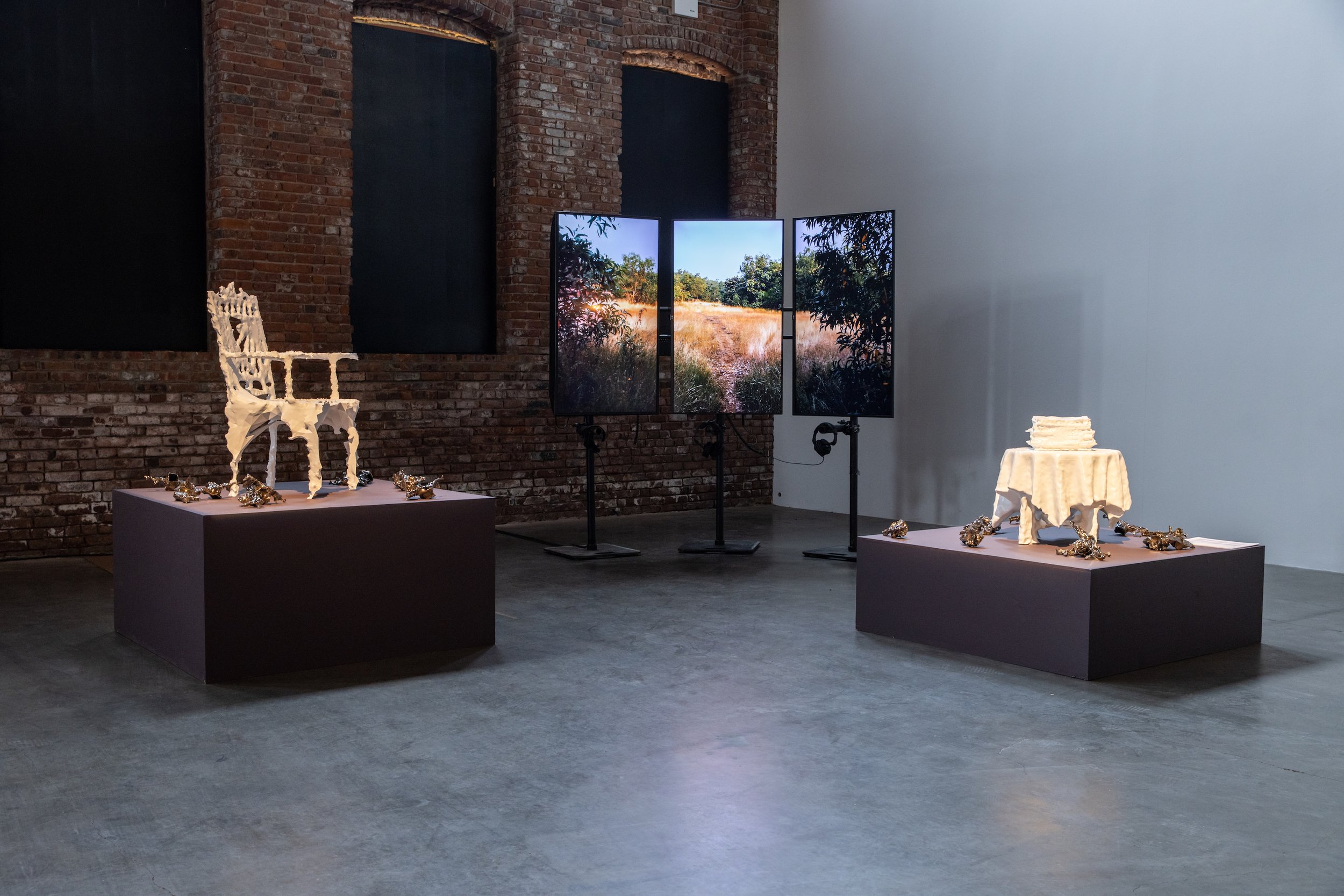
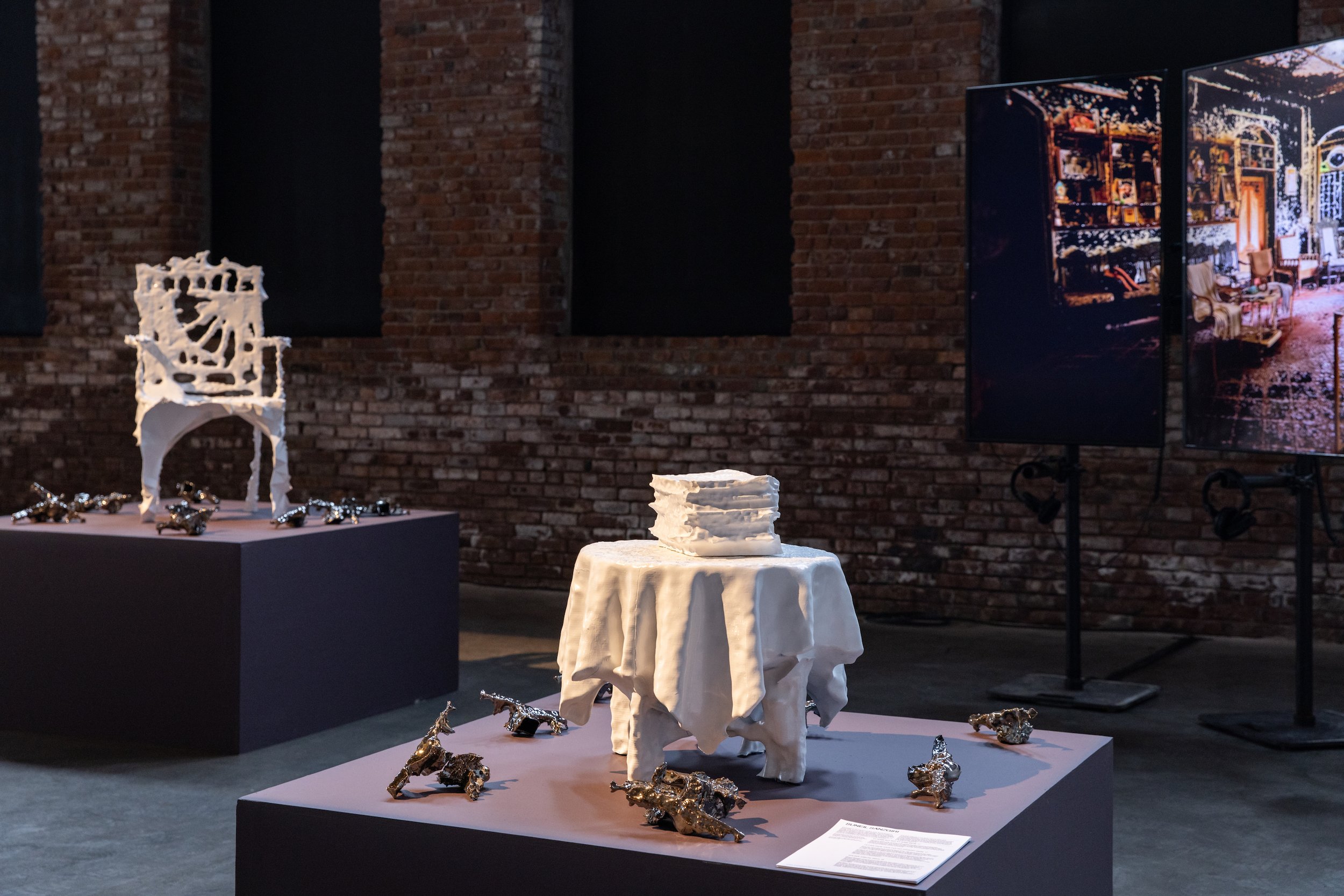

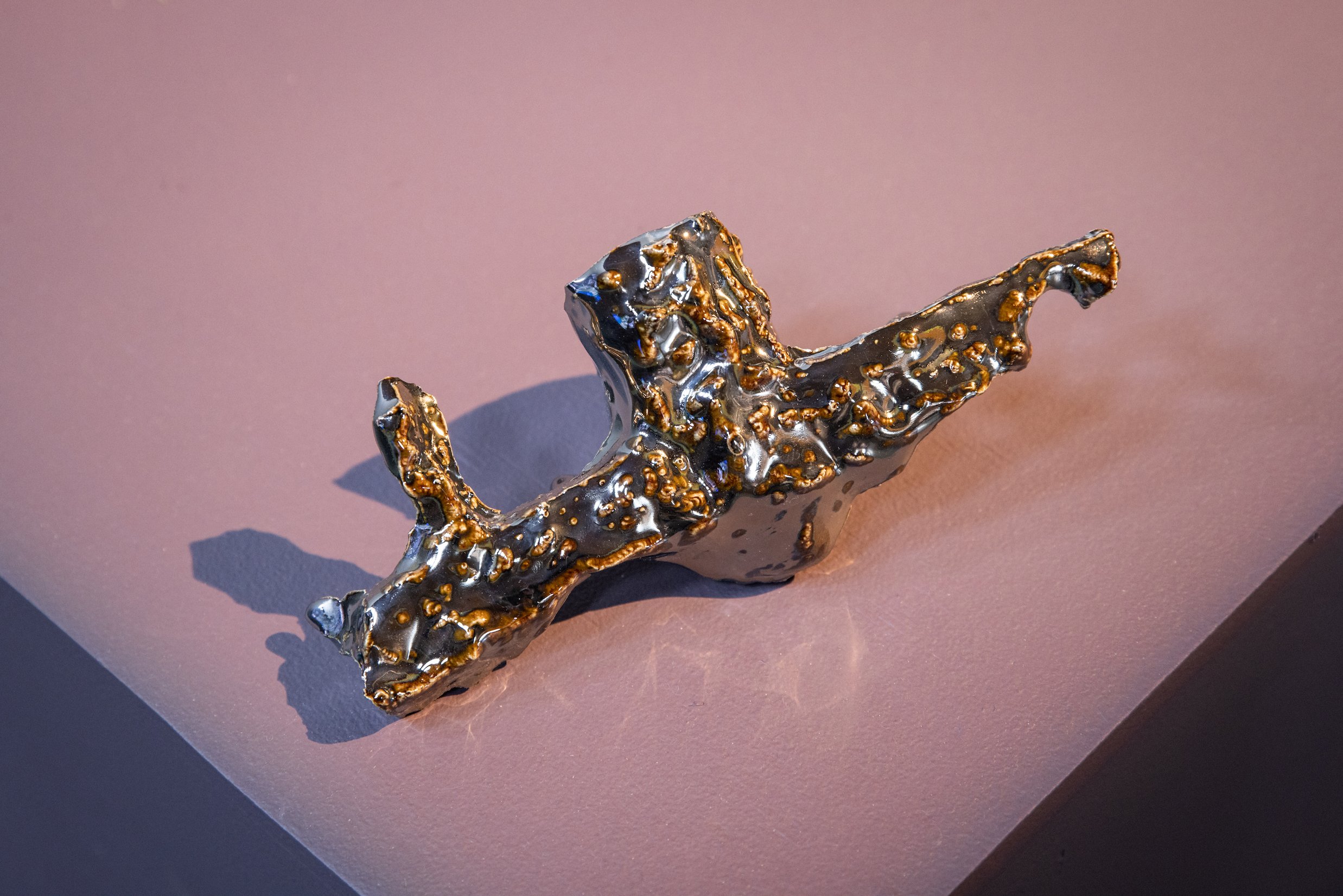
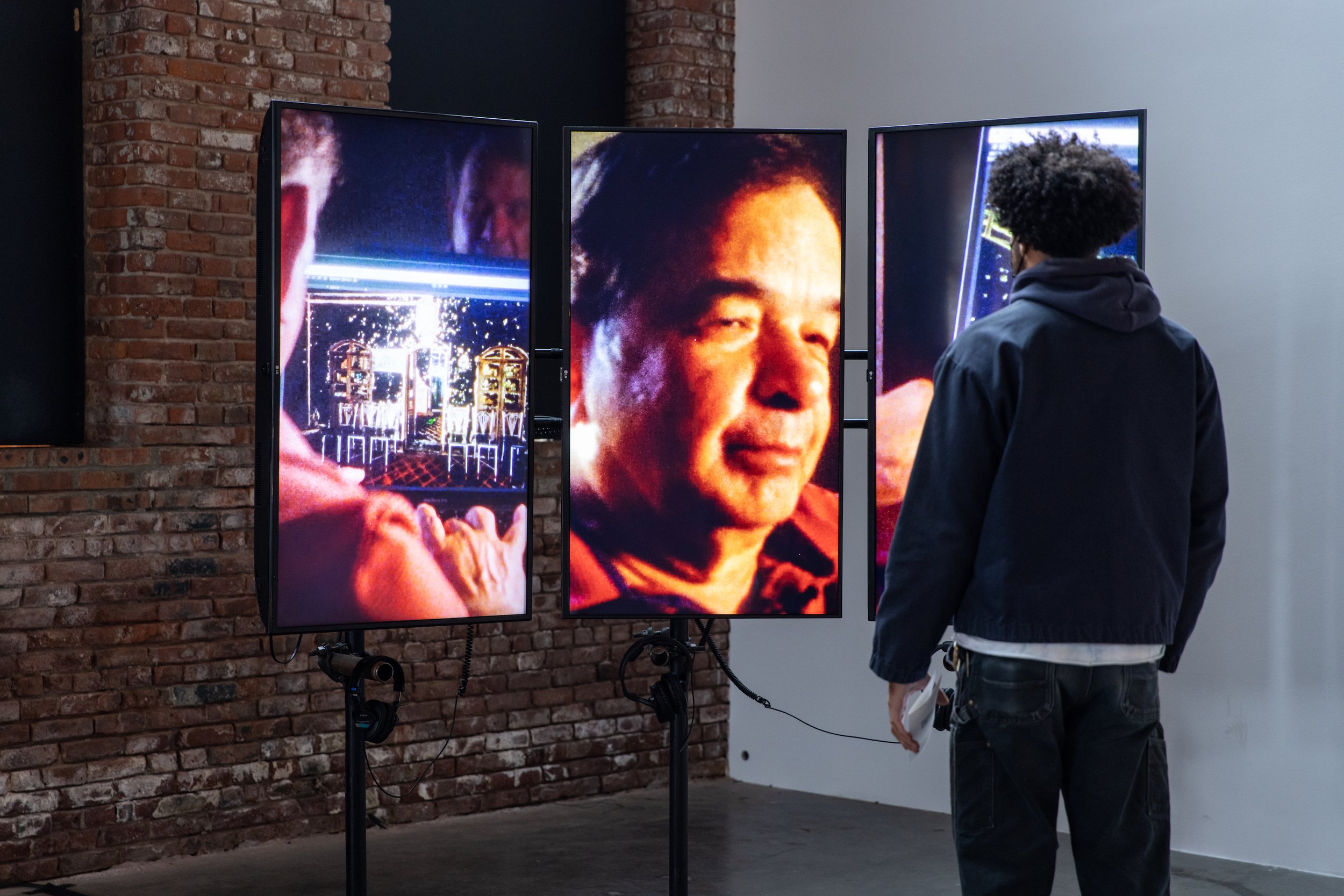
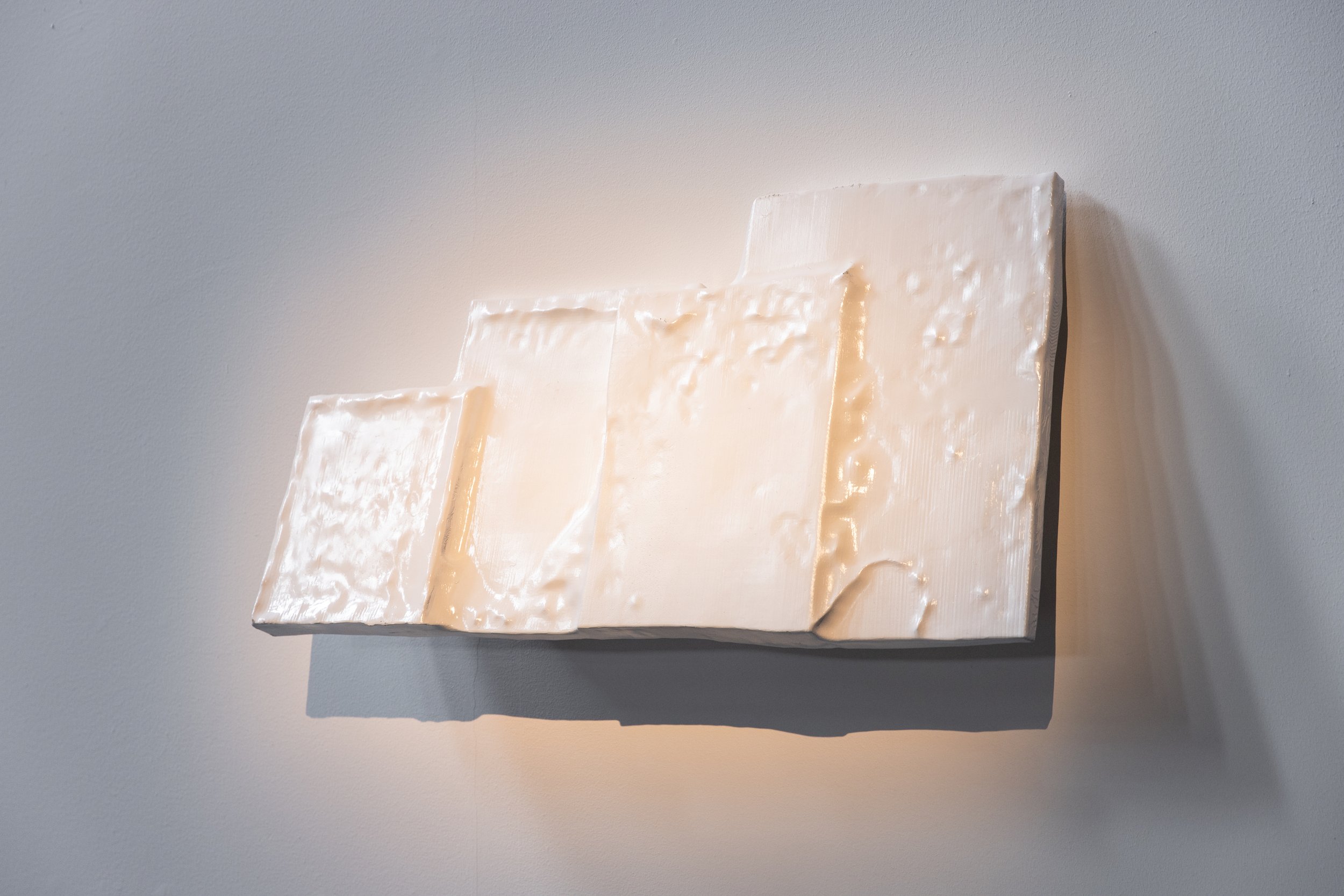
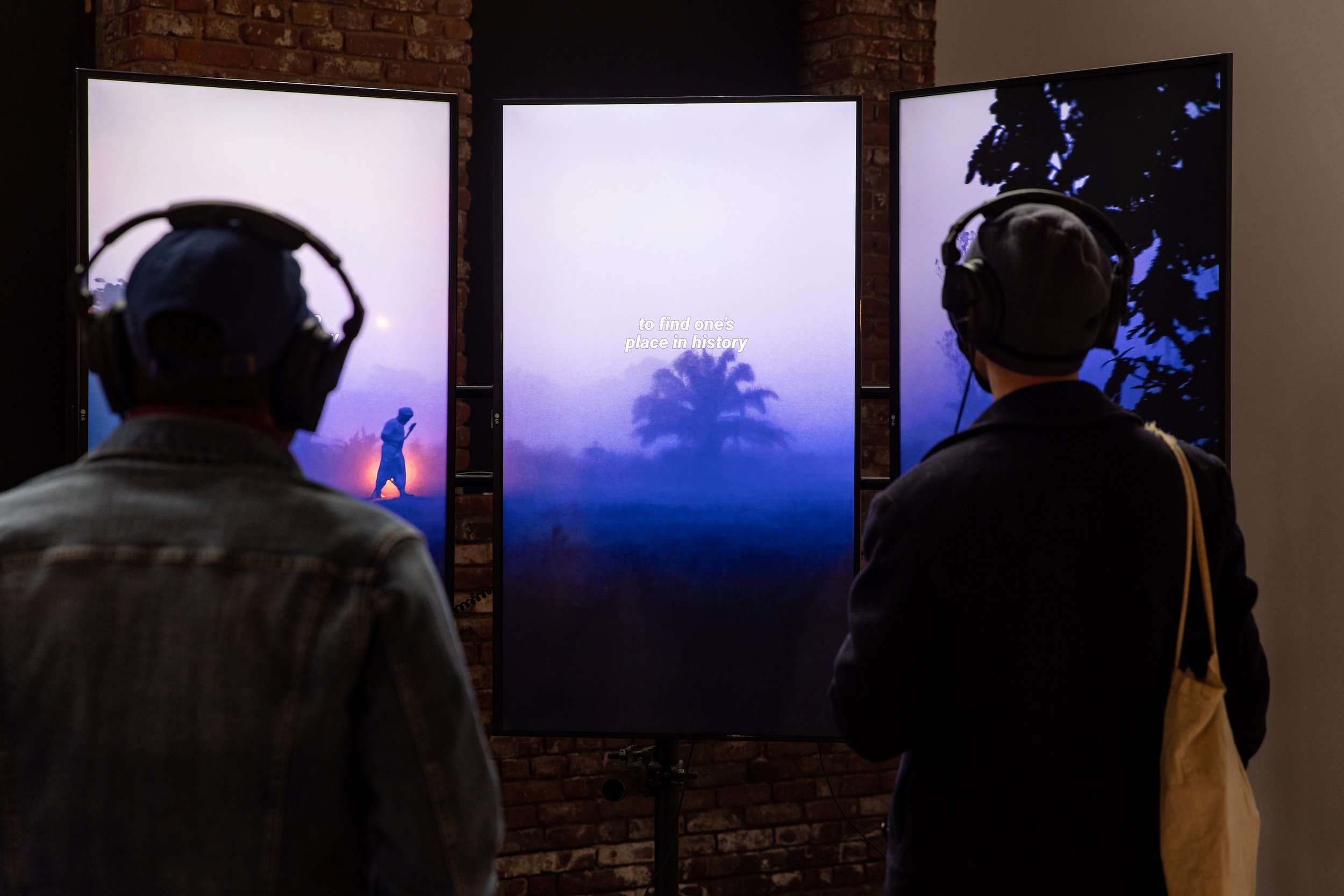
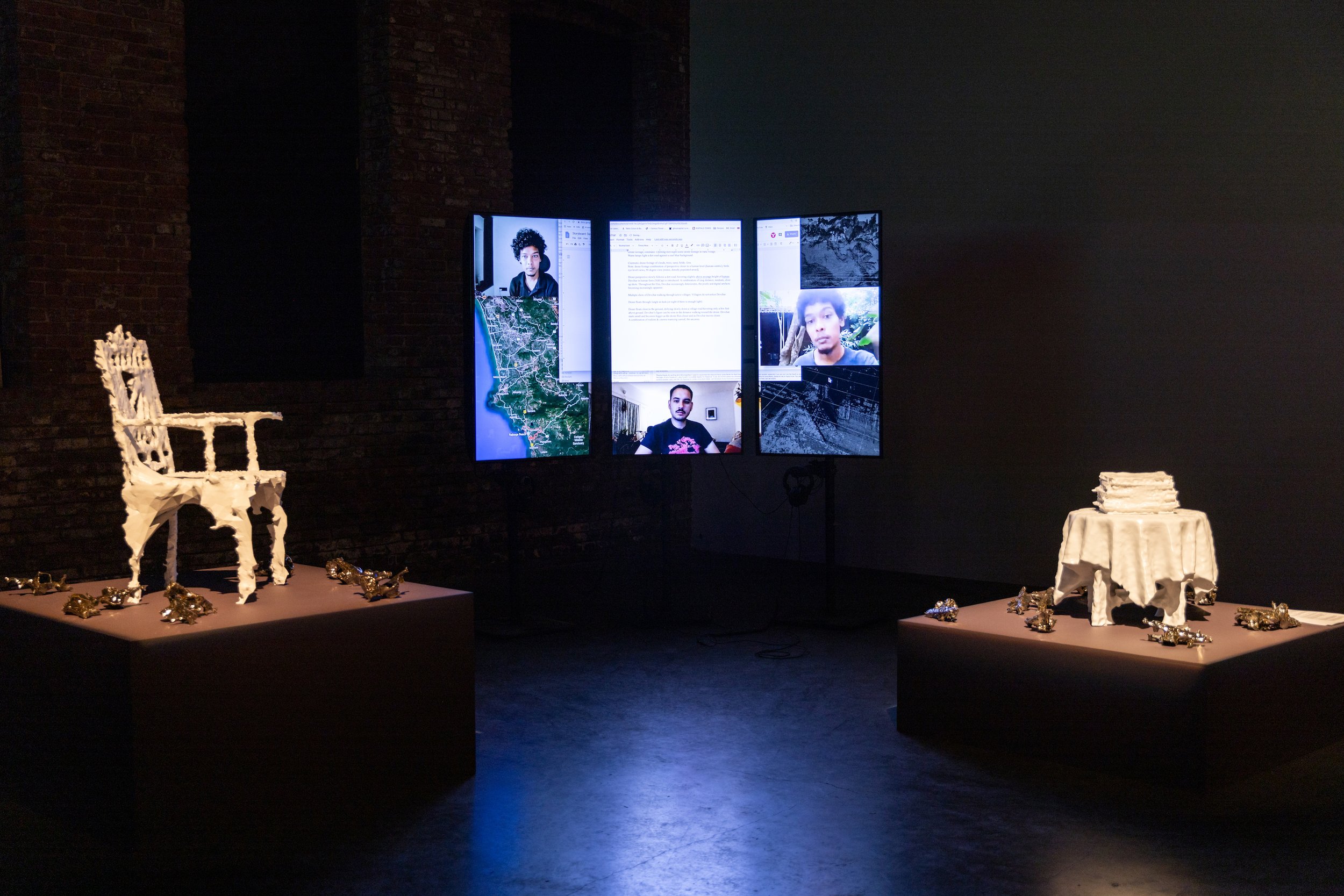
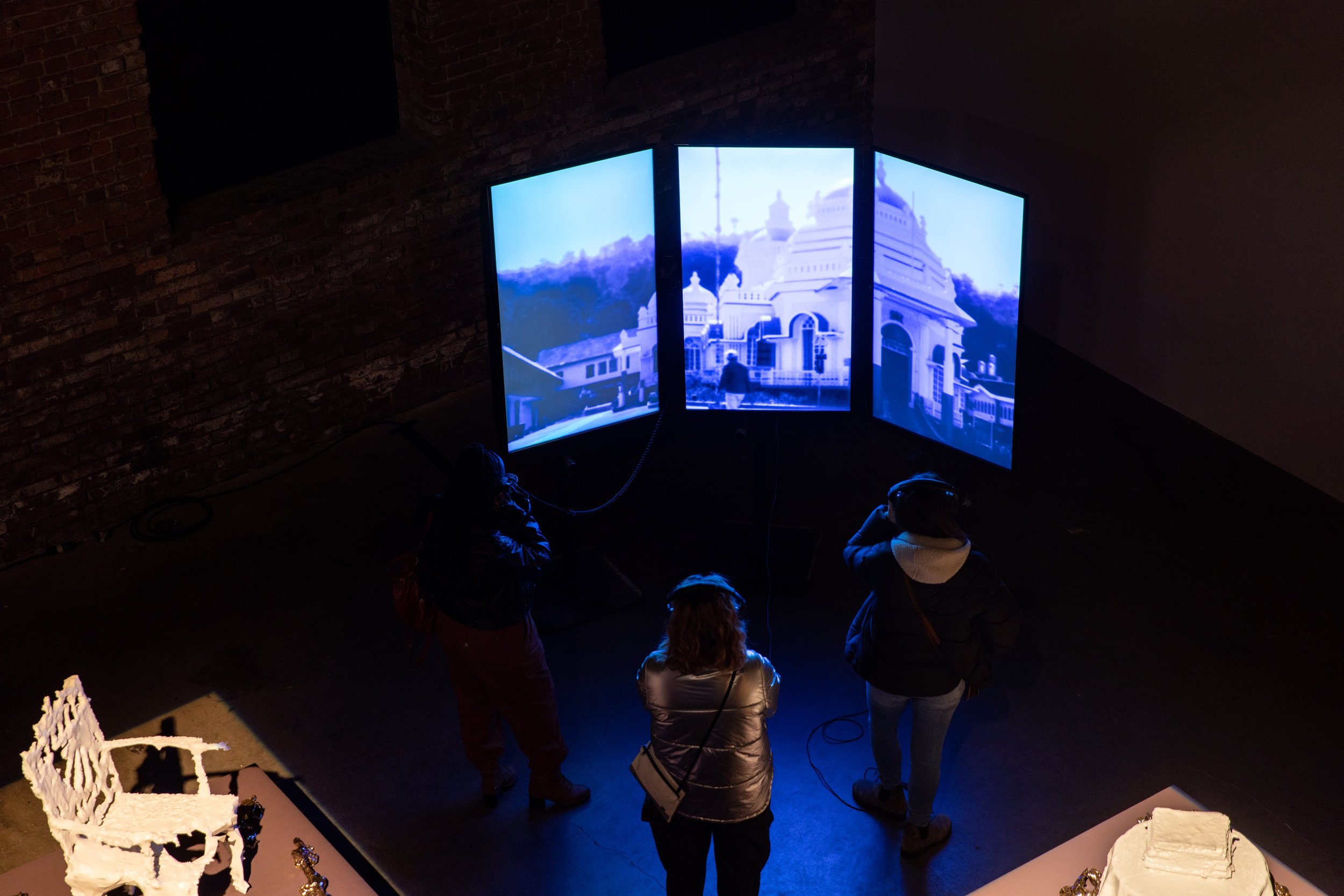
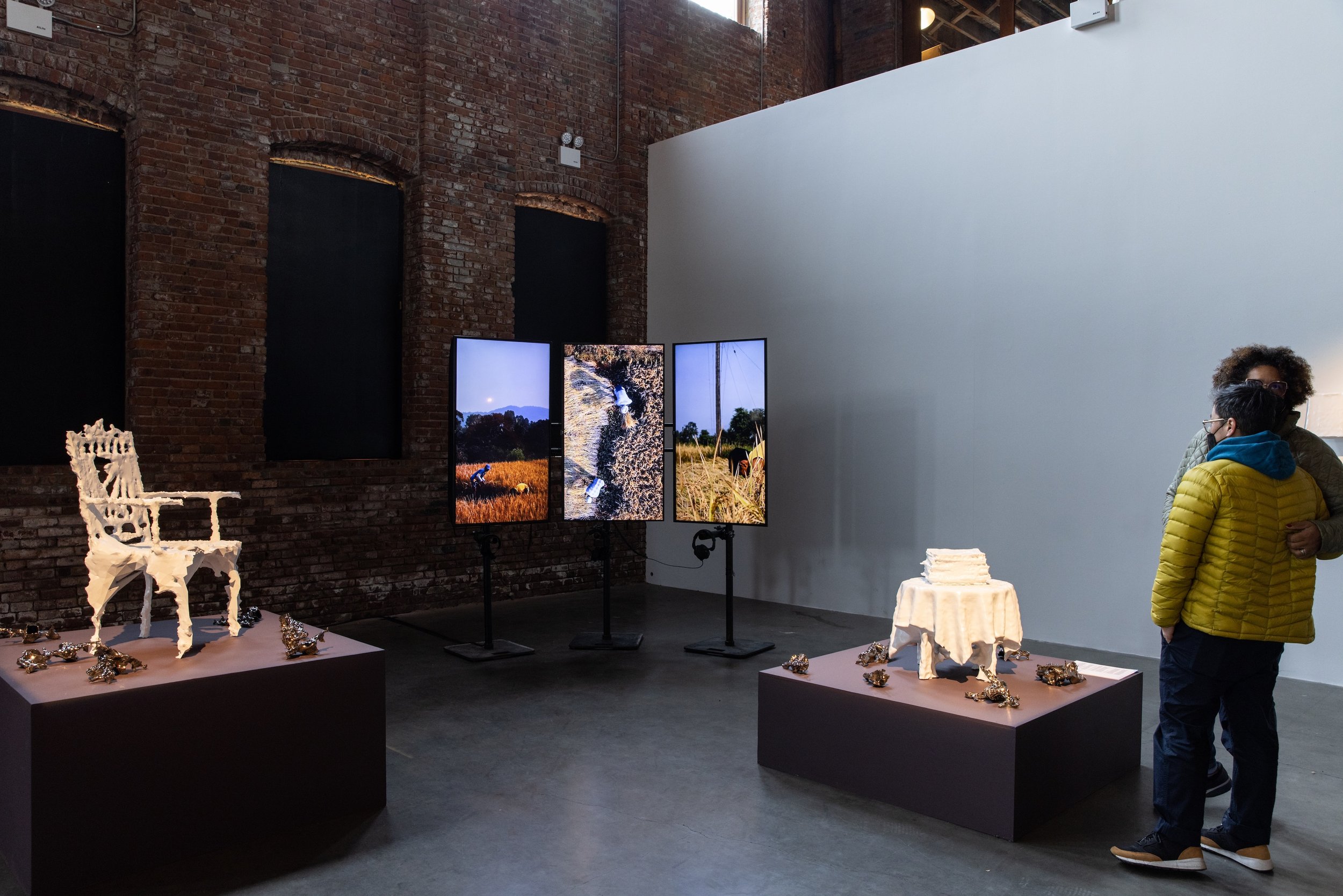

Pioneer Works
Golden Jubilee (three-channel), 2021
Co-presented with ASIA ART ARCHIVE IN AMERICA
Assembled for the first time in New York, Suneil Sanzgiri’s recent body of work (2019 – 2021) explores the richness and density of questions surrounding identity, memory, diaspora, and decolonization in South Asia. Blending 16mm film, desktop aesthetics, 3D renderings, and direct animation, Sanzgiri’s films utilize an aesthetics of distance and proximity to gesture to tensions, possibilities, and replications of what we find when we search for ourselves in the remnants of colonial histories.
GOLDEN JUBILEE , a new three-channel video and sculptural installation, combines 3D printed artifacts pulled from photogrammetry scans of Sanzgiri's ancestral house in Goa, India, along with ceramic cast fragments of objects from the house, to speak to the abstraction and distance of the fragmented nature of belonging, home, hybridity and the way technology changes our understanding what it means to belong to a diaspora.
Everson Museum of Art
Light Work’s Urban Video Project
Golden Jubilee, installation view
Included in the series “The Pourous Body of the Earth” addressing concerns of extraction and colonial forms of environmental racism, Golden Jubilee was projected on the facade of the Everson Museum of Art’s historic building designed by architect I.M. Pei. “Golden Jubilee” played every evening on loop in Syracuse, NY from September 1 - October 22nd, 2022 starting at dusk and ending at 11:00 pm.

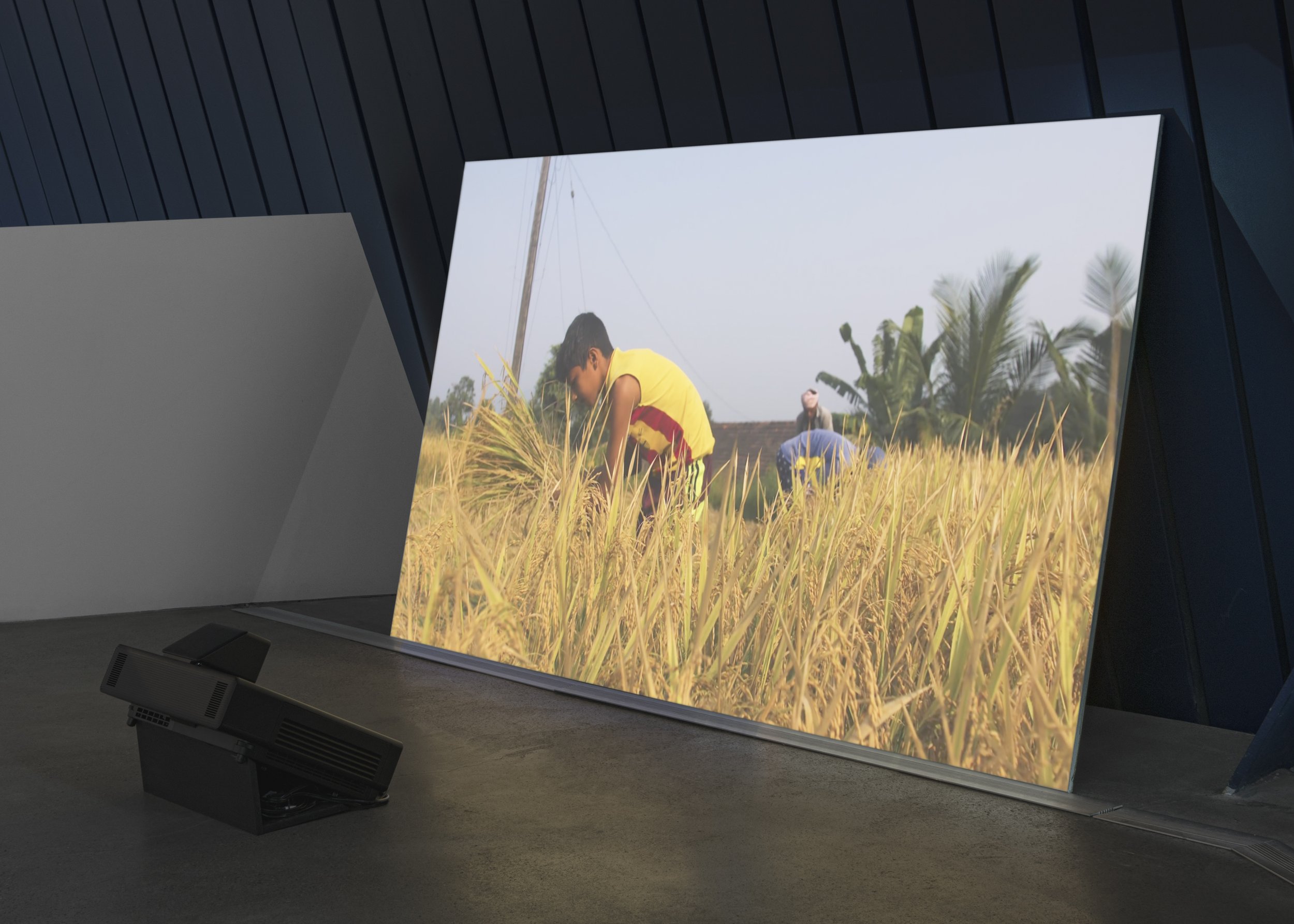
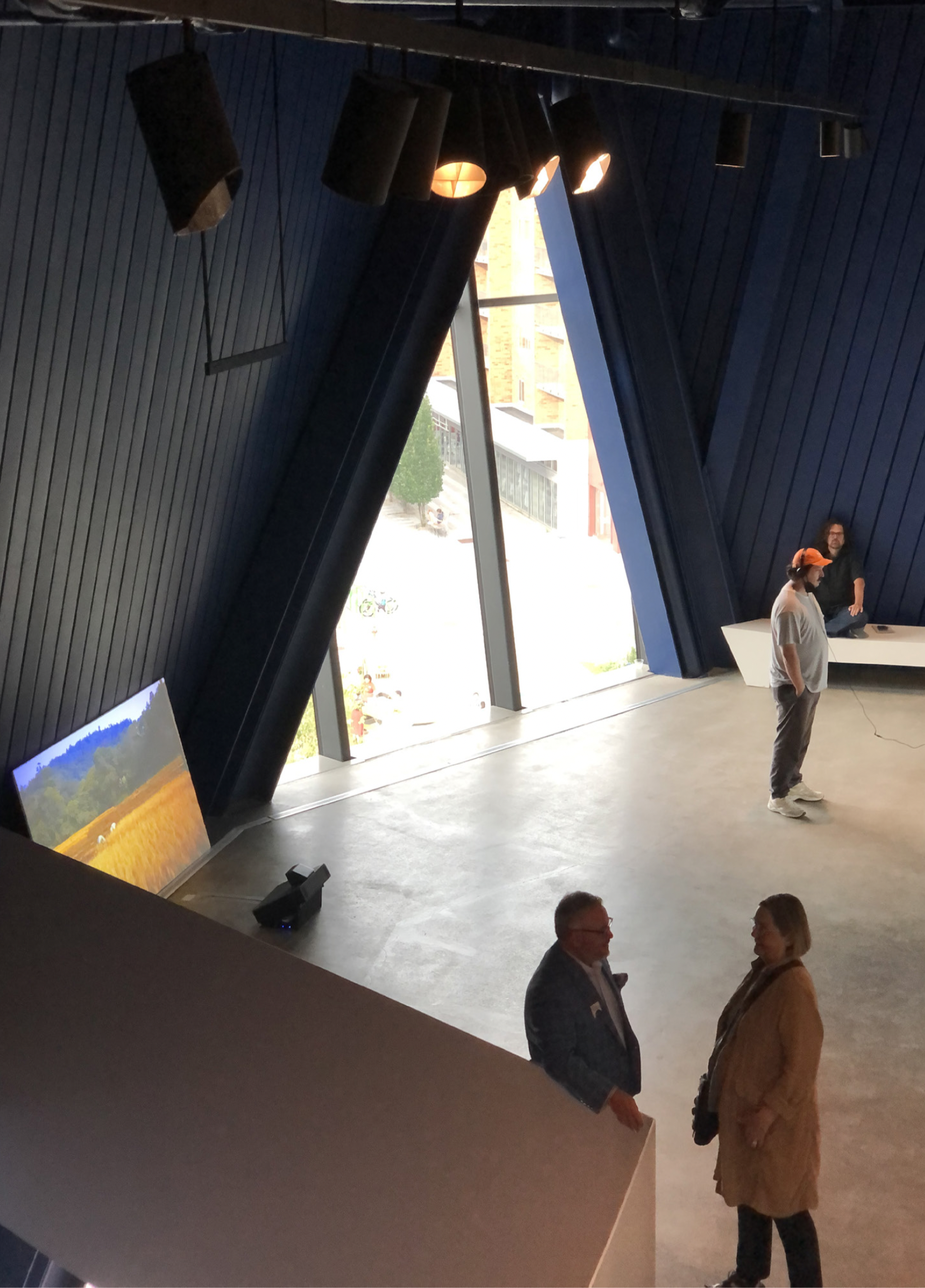
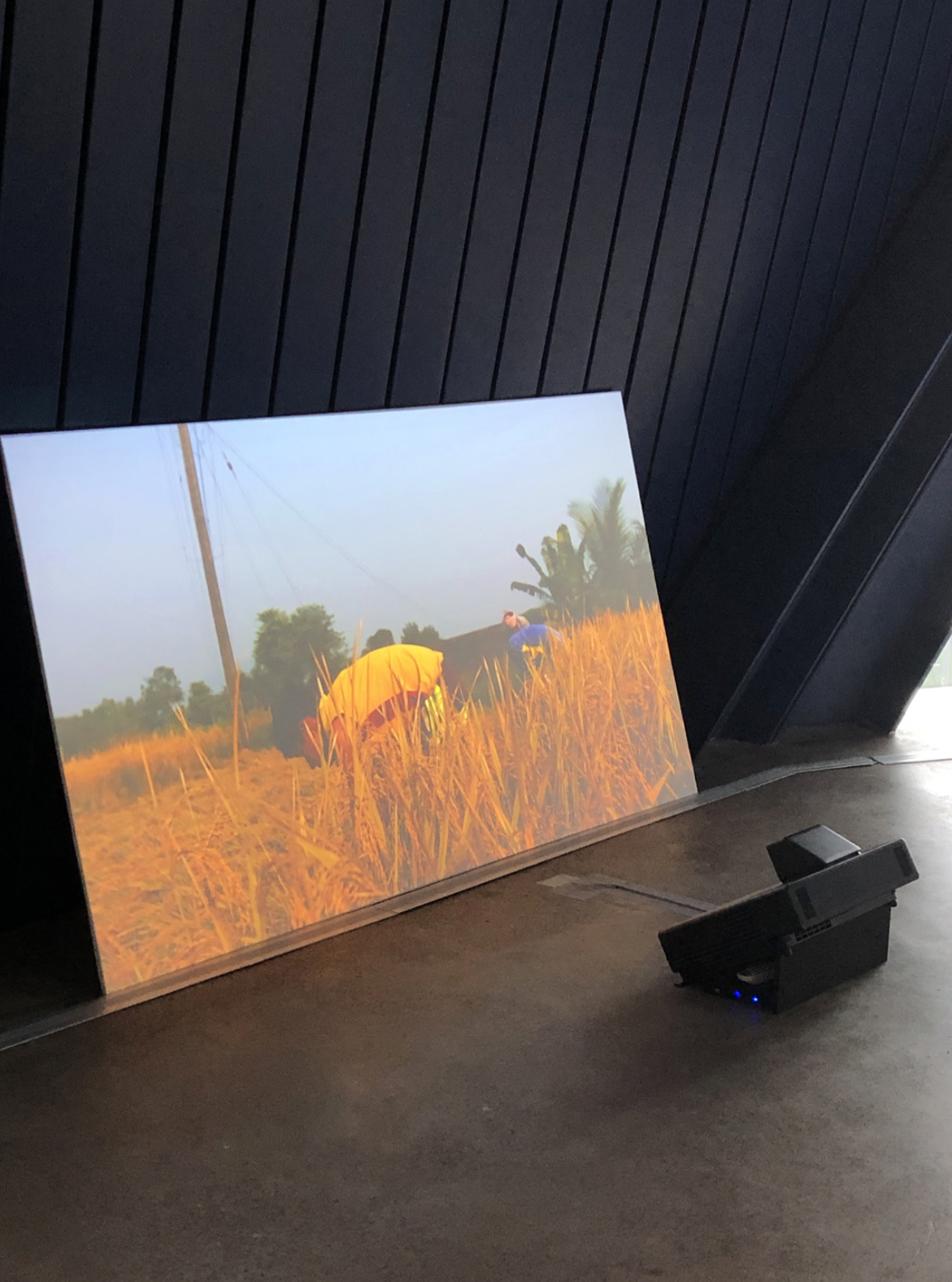
moCa Cleveland
Golden Jubilee (single-channel), 2022
Included as a part of Renée Green’s solo exhibition “Contact” at MoCA Cleveland in conjunction with FRONT Triennial, “Golden Jubilee” was projected on a slanted piece of drywall, occupying a corner of the museum rarely utilized. The image’s proximity to the floor creates a new dynamic for the film, allowing scenes to be literally and figuratively grounded, with certain subjects’ likenesses appearing to reach into the museum’s floor itself.
Along with this single-channel installation, Sanzgiri worked with Green to co-program a film series with MoCA Cleveland in Fall of 2022.


GALLERI IMAGE, DENMARK
“LETTER FROM YOUR FAR-OFF COUNTRY” (SINGLE-CHANNEL VIDEO, 16MM TO DIGITAL, CGI) 2024
included in the exhibition Manifold – contemporary perspectives from India curated by arko datto
In the English language, the word manifold implies multitude, plethora, variety. In mathematical physics, “manifolds” allow for complicated structures to be expressed and understood in terms of geometric spaces, like those depicted on an atlas, that are relatively better understood. Drawing from these multiple readings of the word ‘manifold’, we present this current exhibition of Indian contemporary art.
India is a country comprising multiple ethnicities, innumerable languages and comes with a mind-boggling array of associated complexities. Pluralism has long served as an essential cornerstone in this land: in all its conceivable forms, be it religious, political, cultural or philosophical. Of late, there have been significant concerted efforts in this country to collapse its manifold diversities and reduce it to a monolithic map based on majority, language, and religion, while simultaneously opening the land and its people up to the manifold violences of the neoliberal world order, which constantly seeks out newer territories, markets and victims. Arko Datto’s curation intends to resist this and build solidarities in its own way.
Using a plethora of artistic strategies rooted in the image, the artists presented here propose unique perspectives on reading contemporary India, simultaneously distilling, and expanding upon the manifold facets of their chosen topics to present cohesive artistic visions. The exhibition demonstrates both variation in subjects and in methods, from the documentary to and expansive multi-faceted artistic expression and includes photography, video, sound, installation and examples of the distribution of photography through photobooks, social media and zine culture.
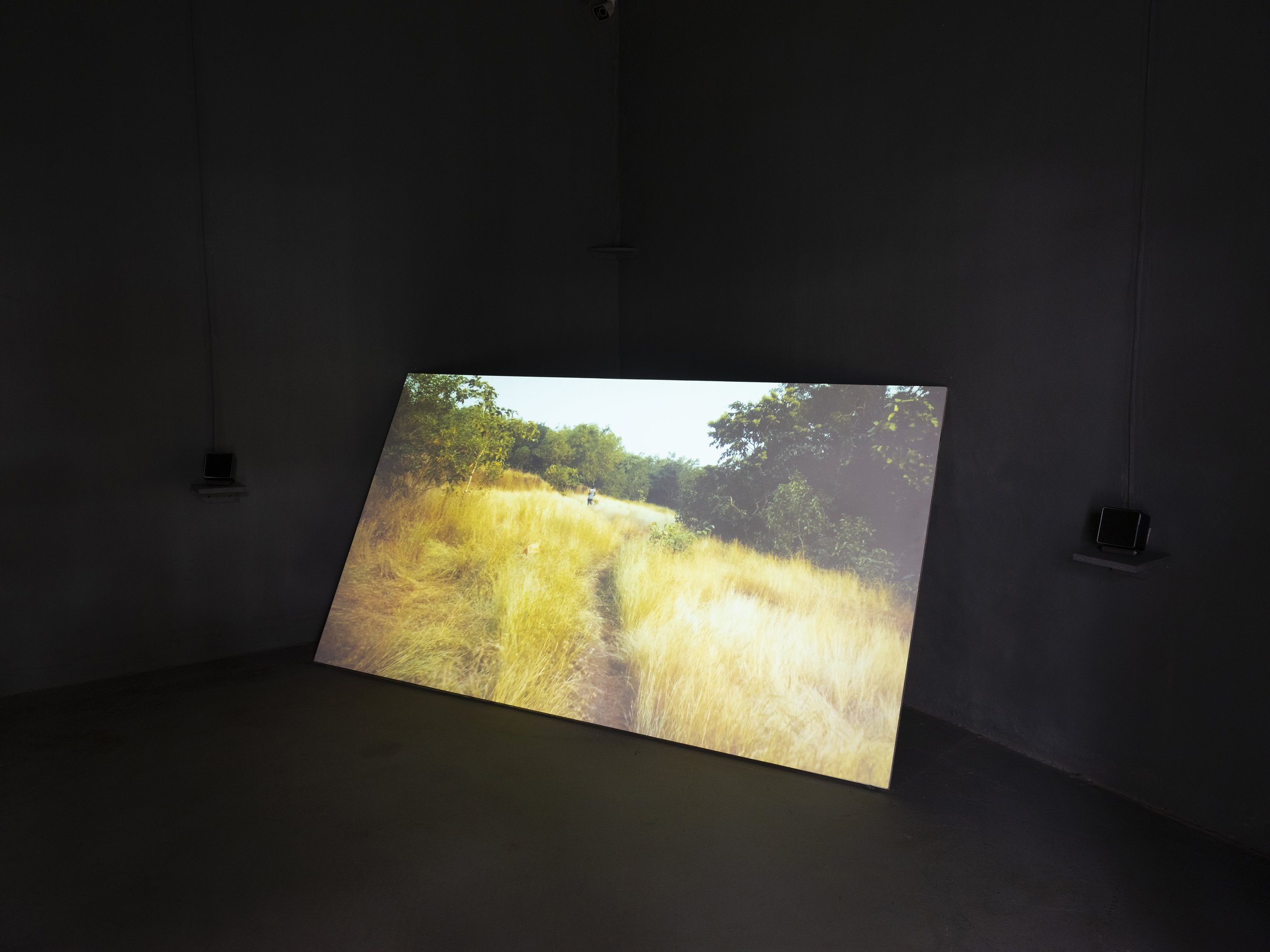
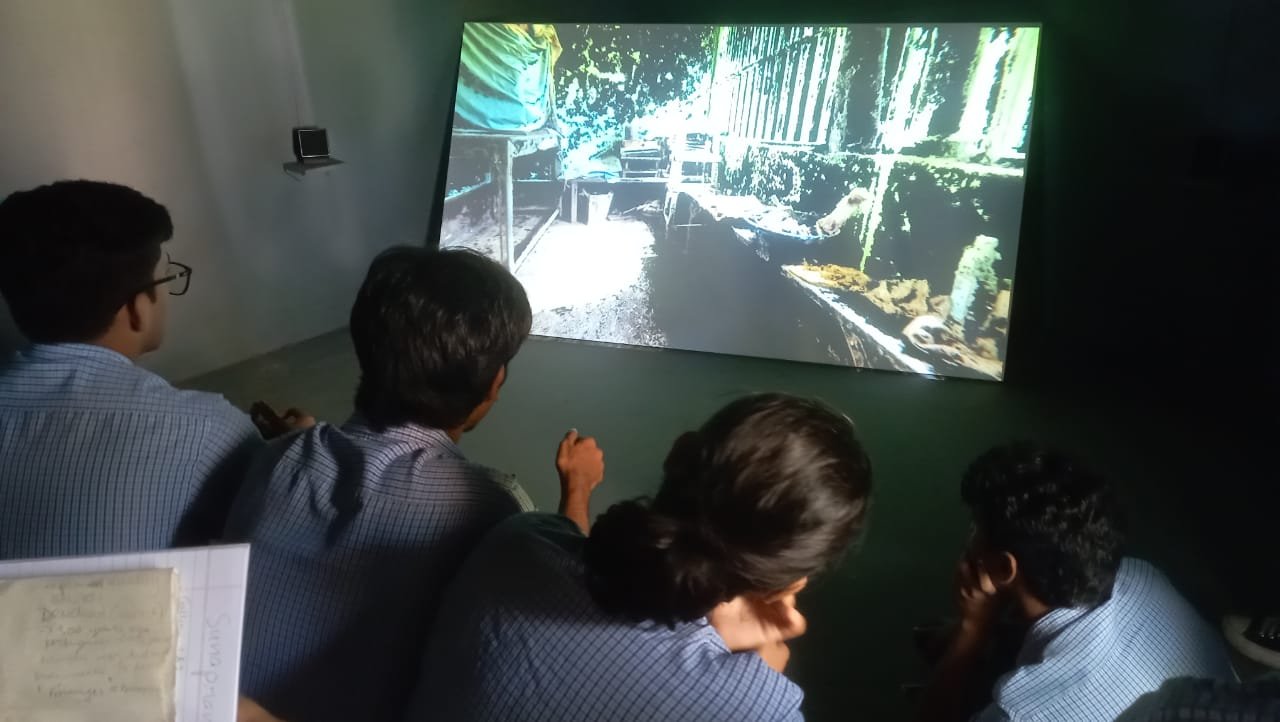
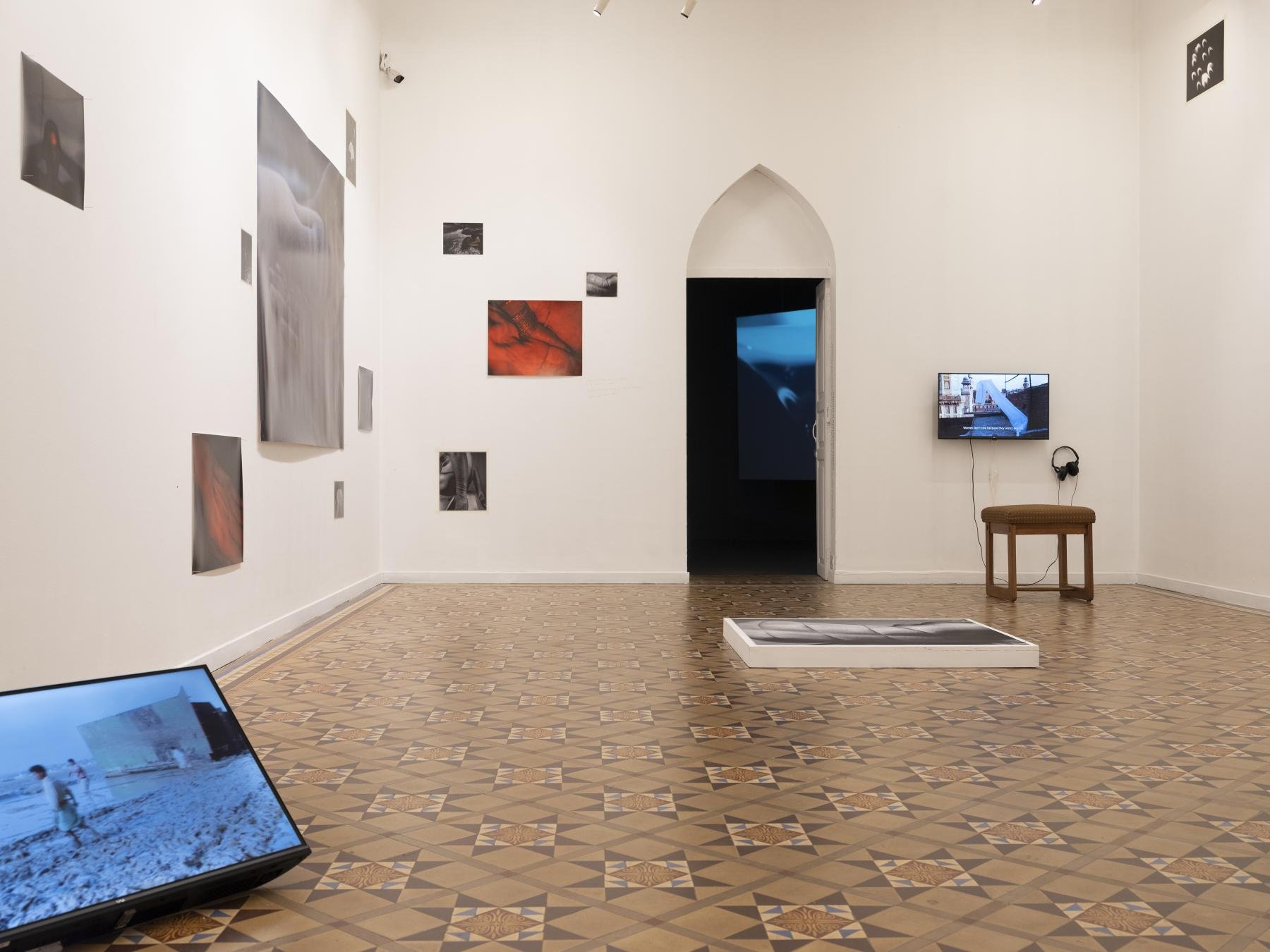
Sunaparanta Center for the Arts, Goa
Golden Jubilee (single-channel), 2023
included in the group exhibition “Growing Like a Tree: Sent a Letter”
Sunaparanta Goa Centre for the Arts and Ishara Art Foundation join hands in a pioneering initiative that advances new and cutting-edge art practices from South Asia and beyond. This show reflects the complex and imbricated histories of South Asia and the world. The curation pushes the boundaries of contemporary image-making as modes of address that offer a changing map of interconnected practices.
